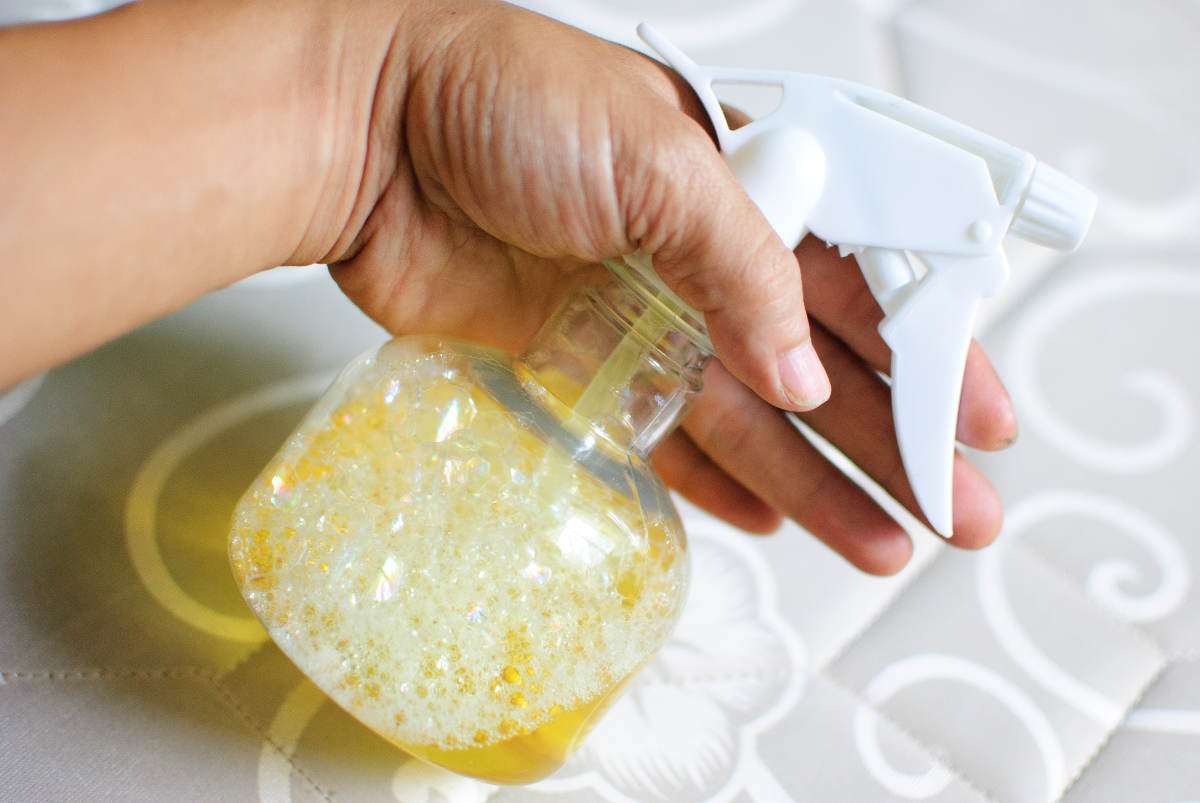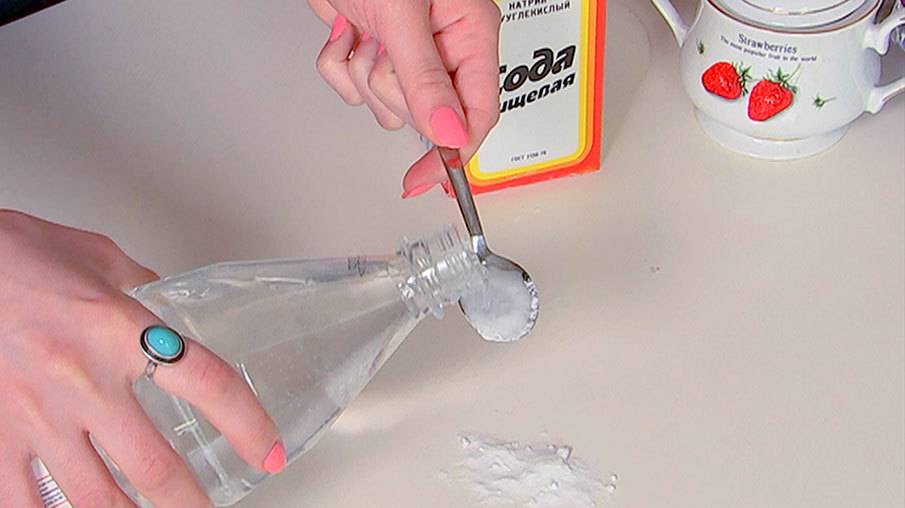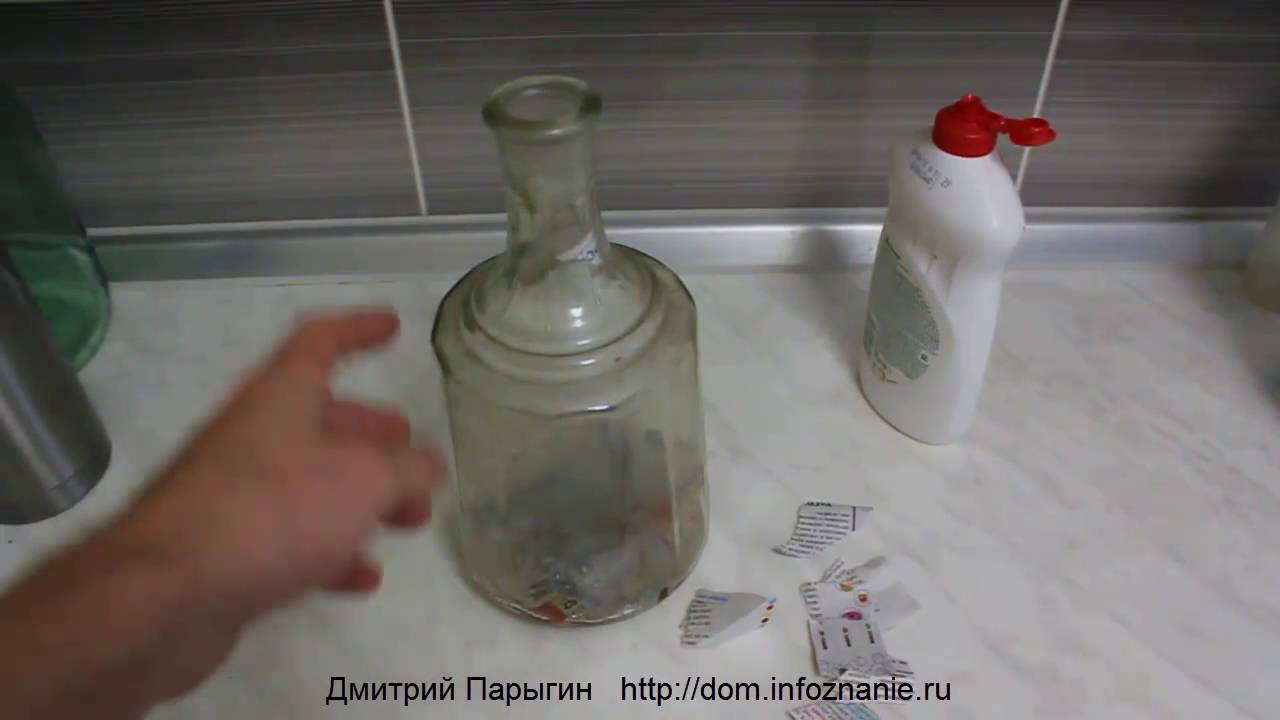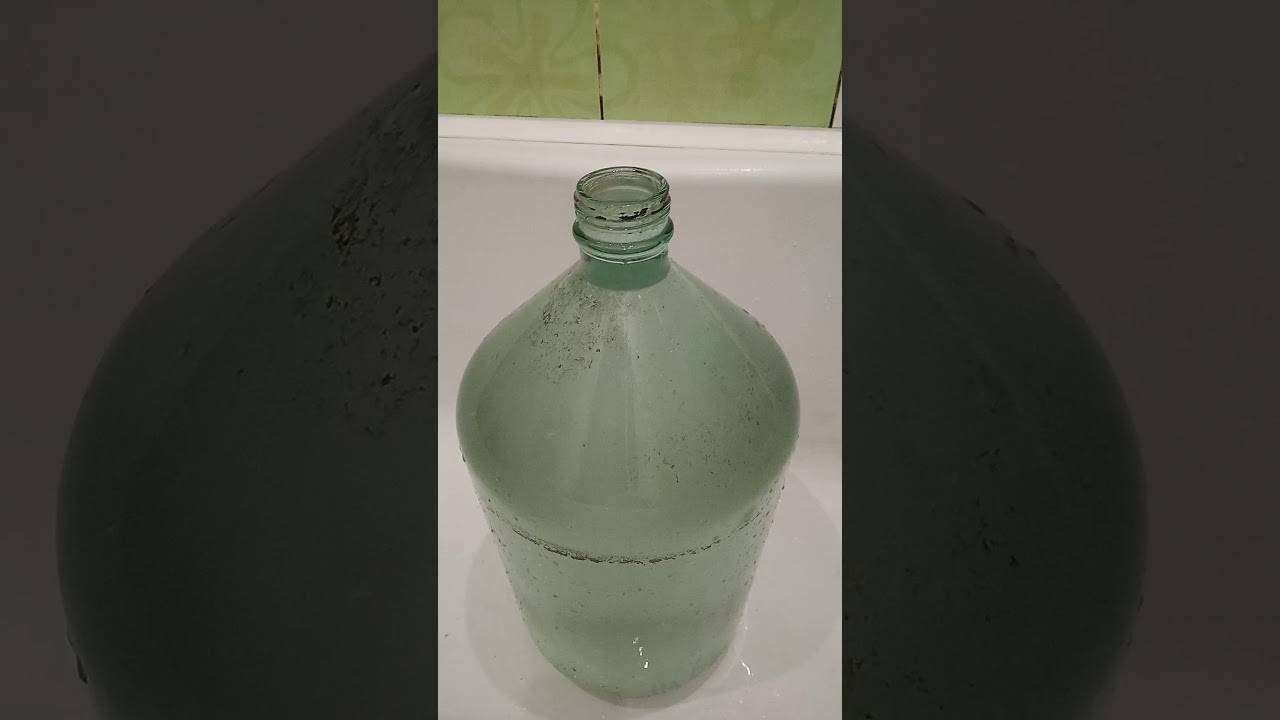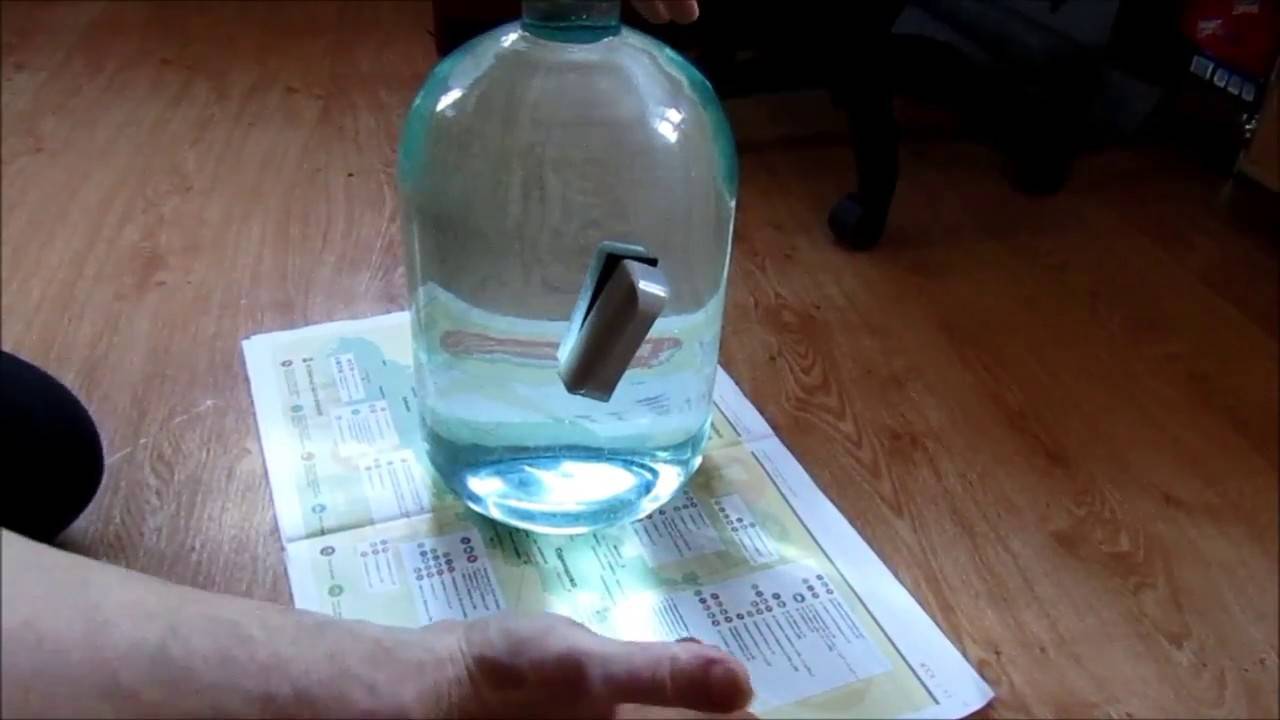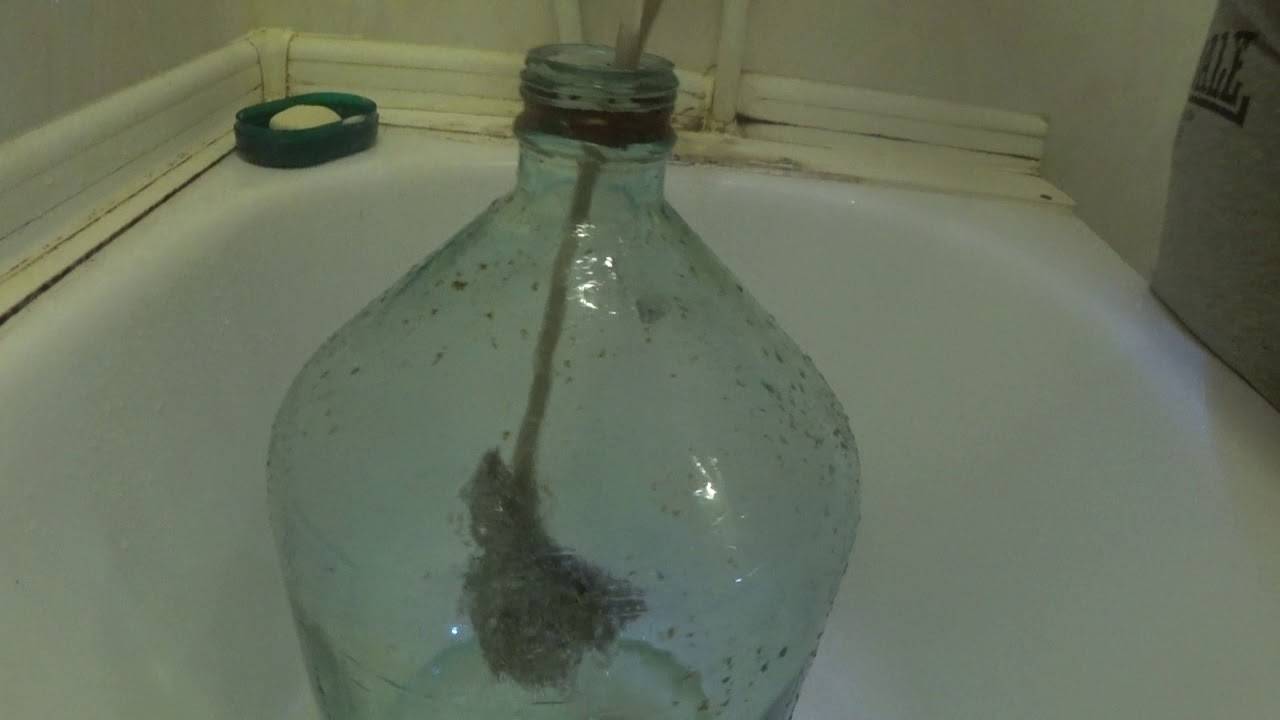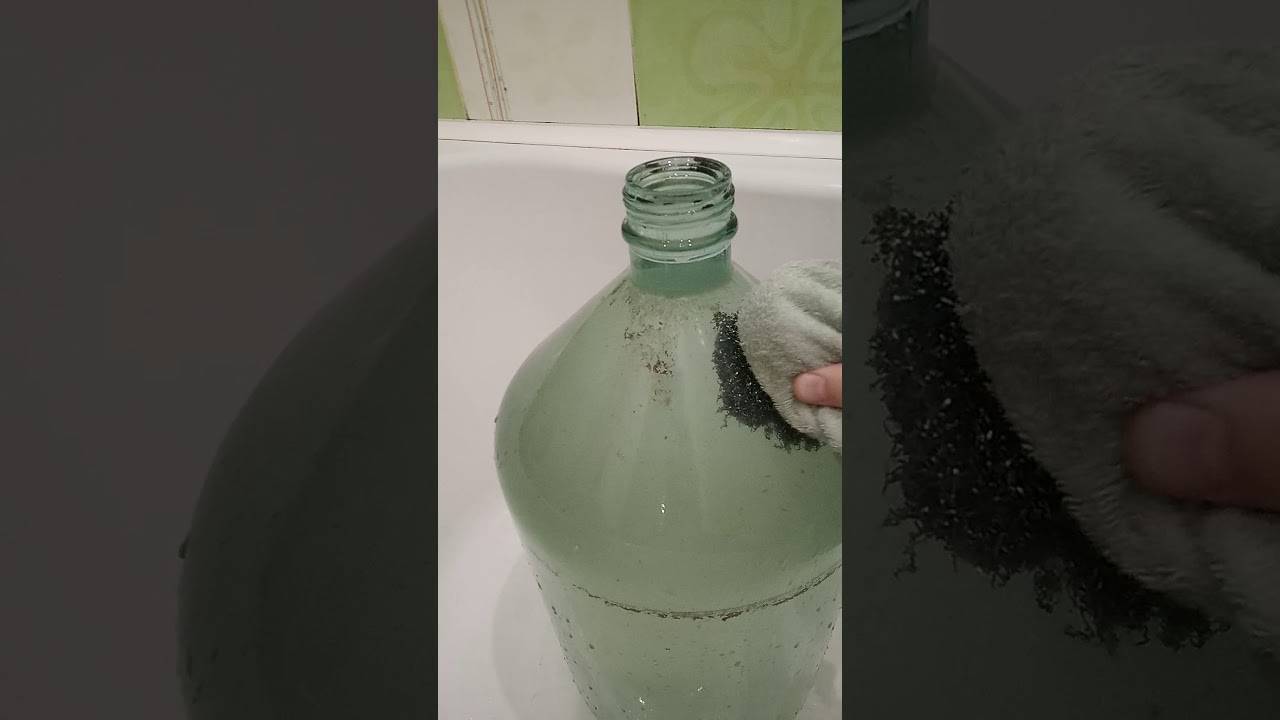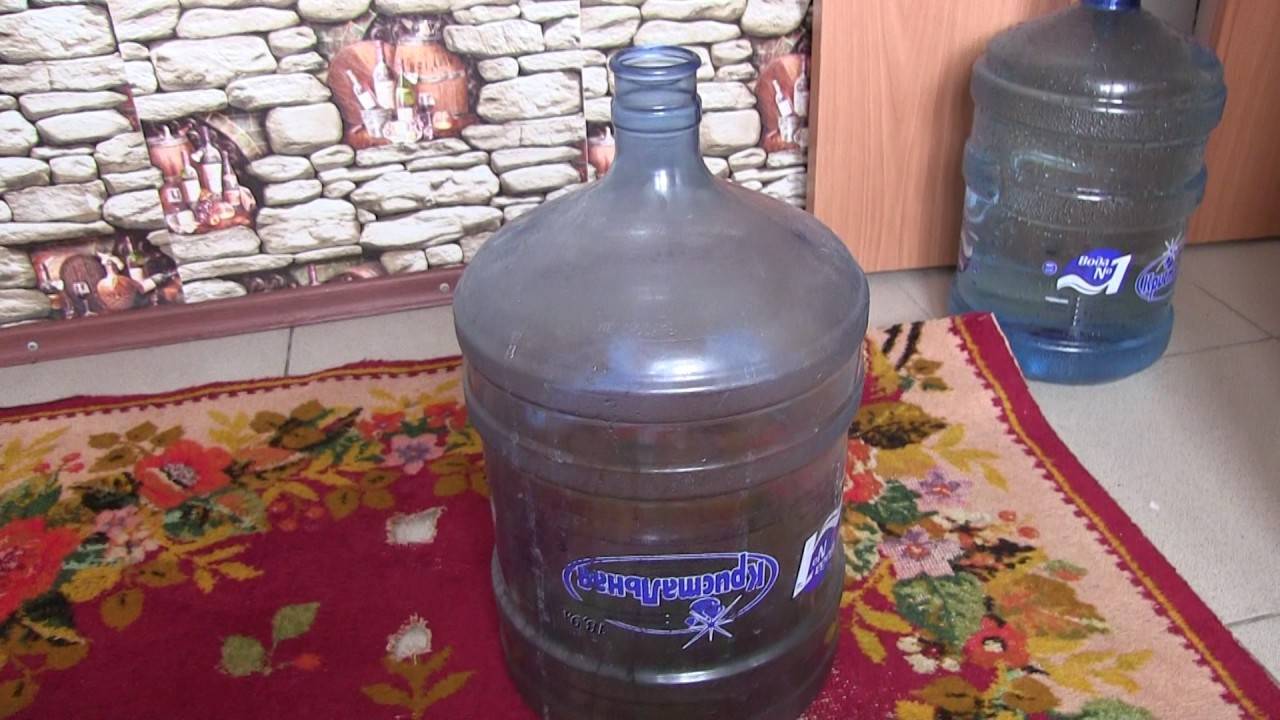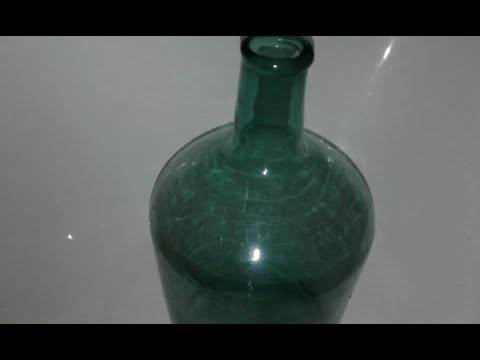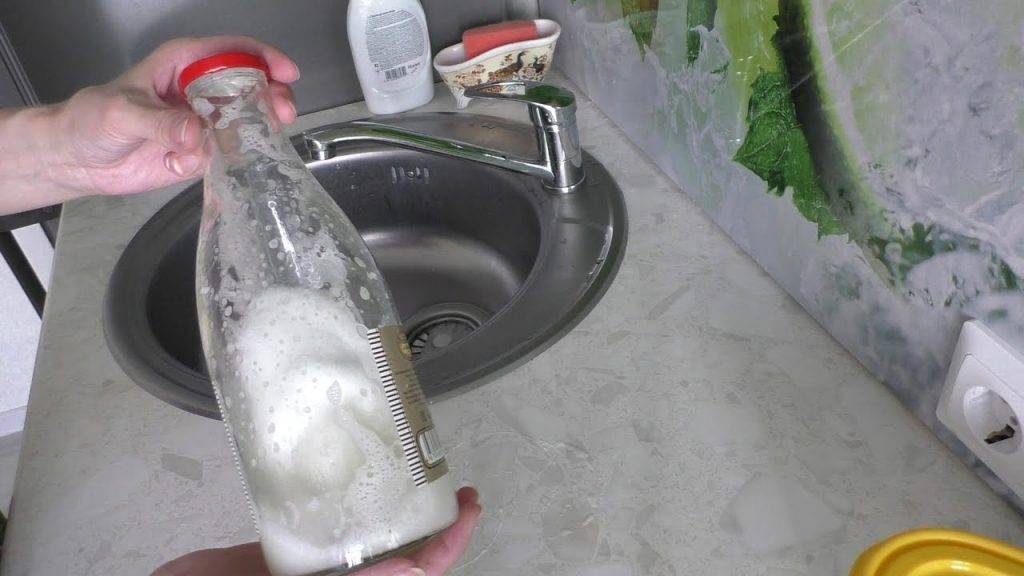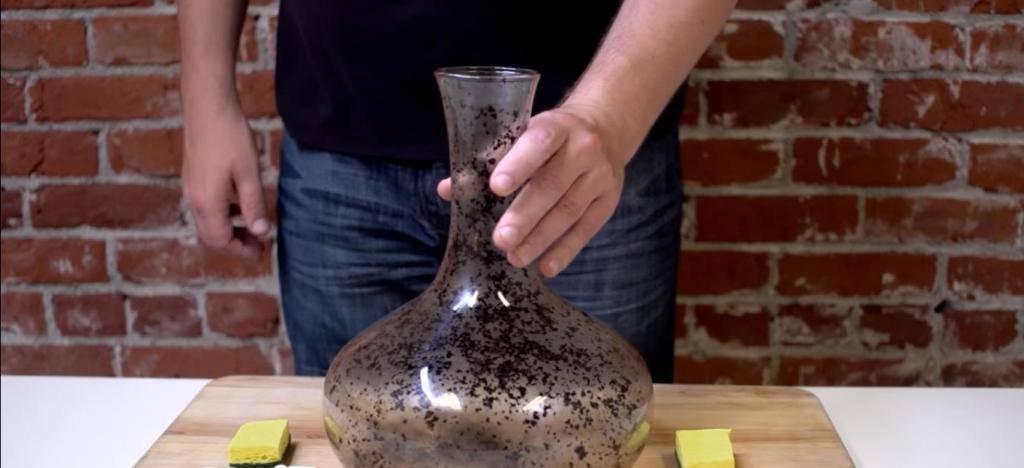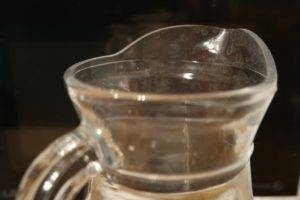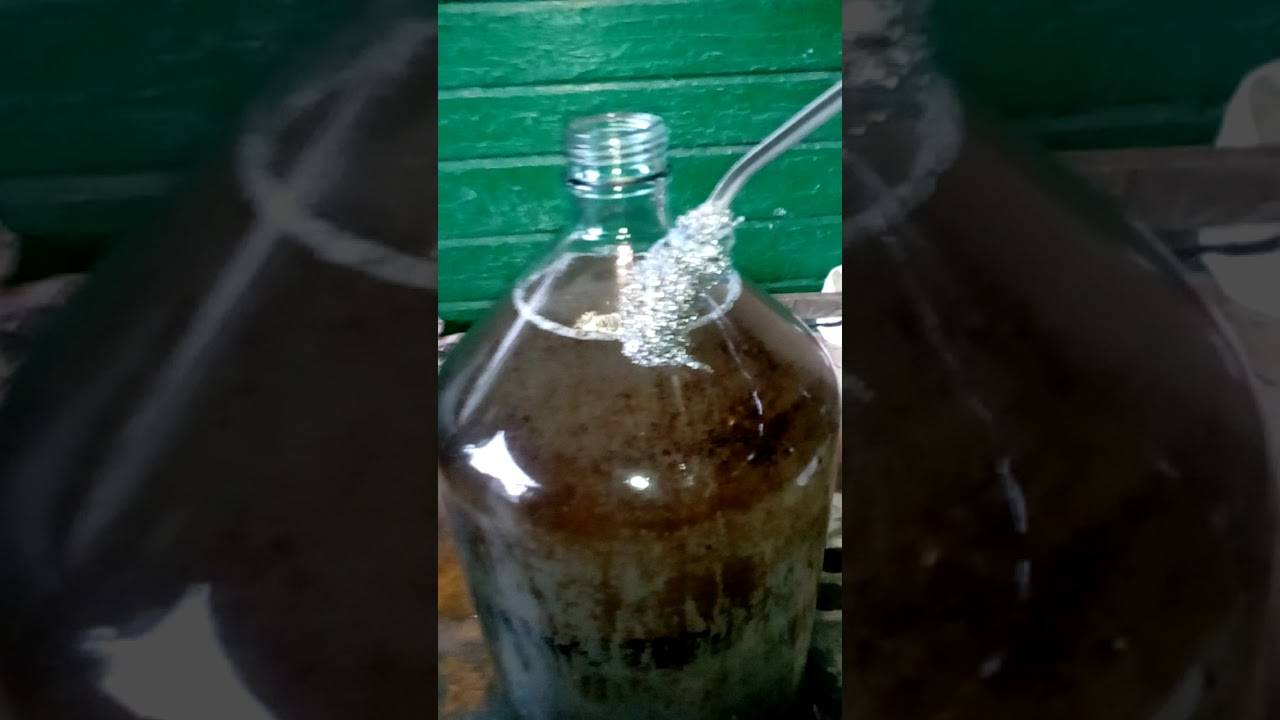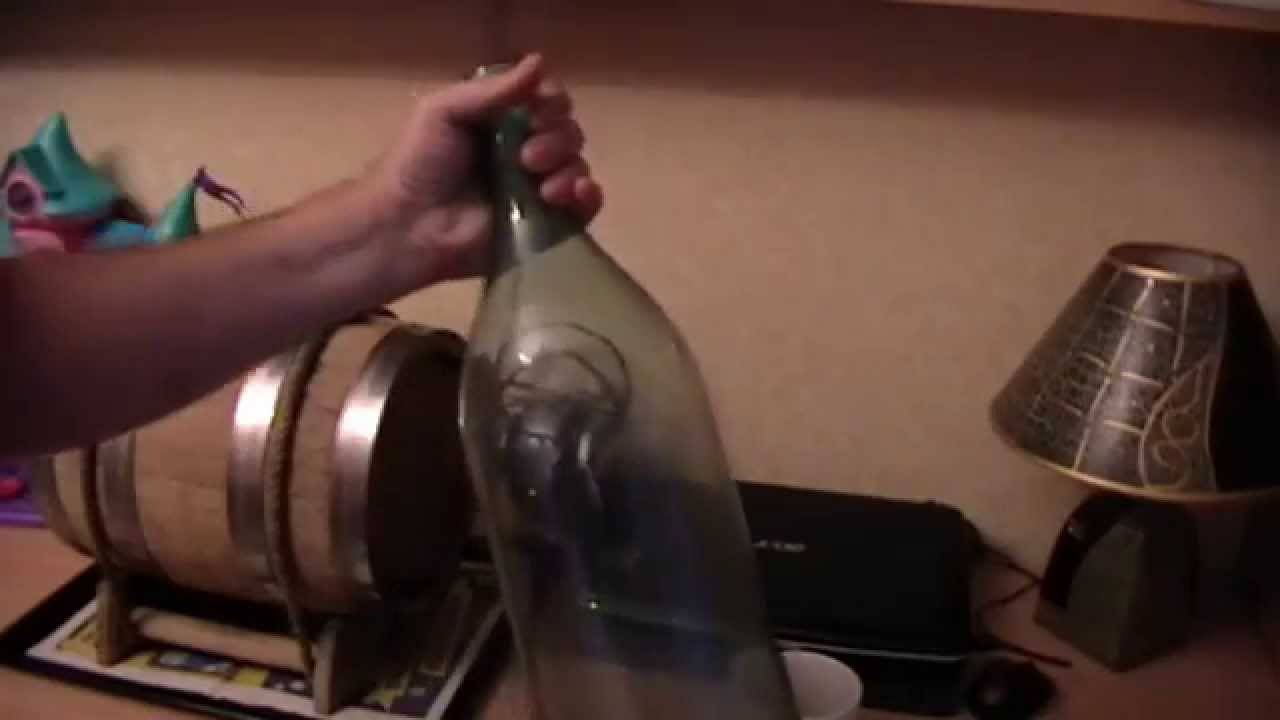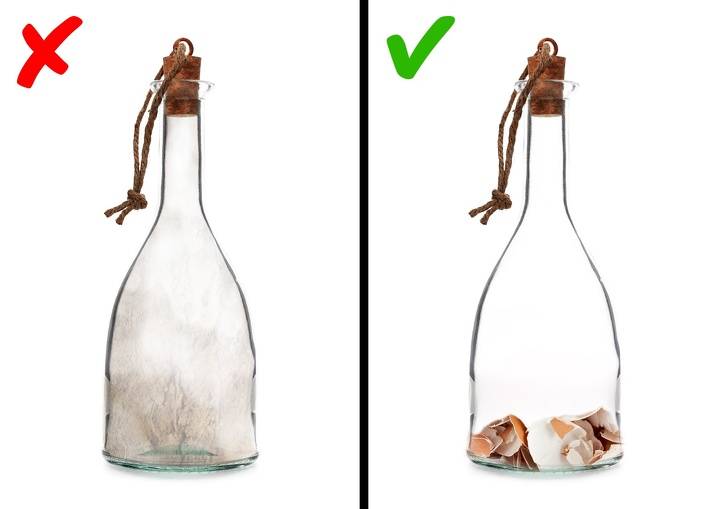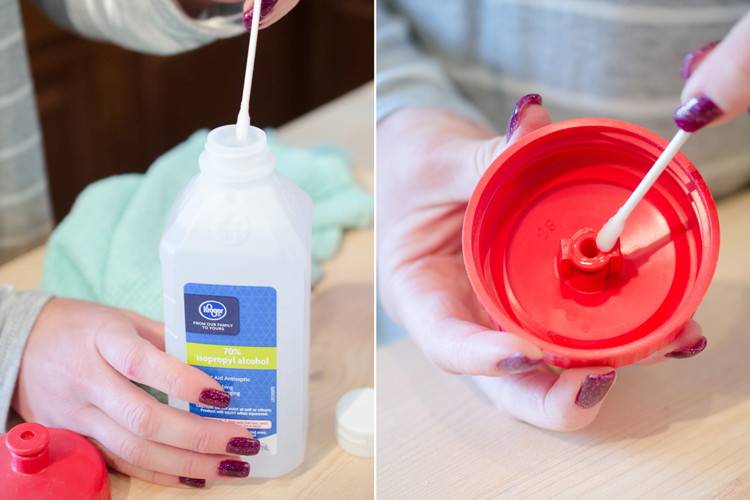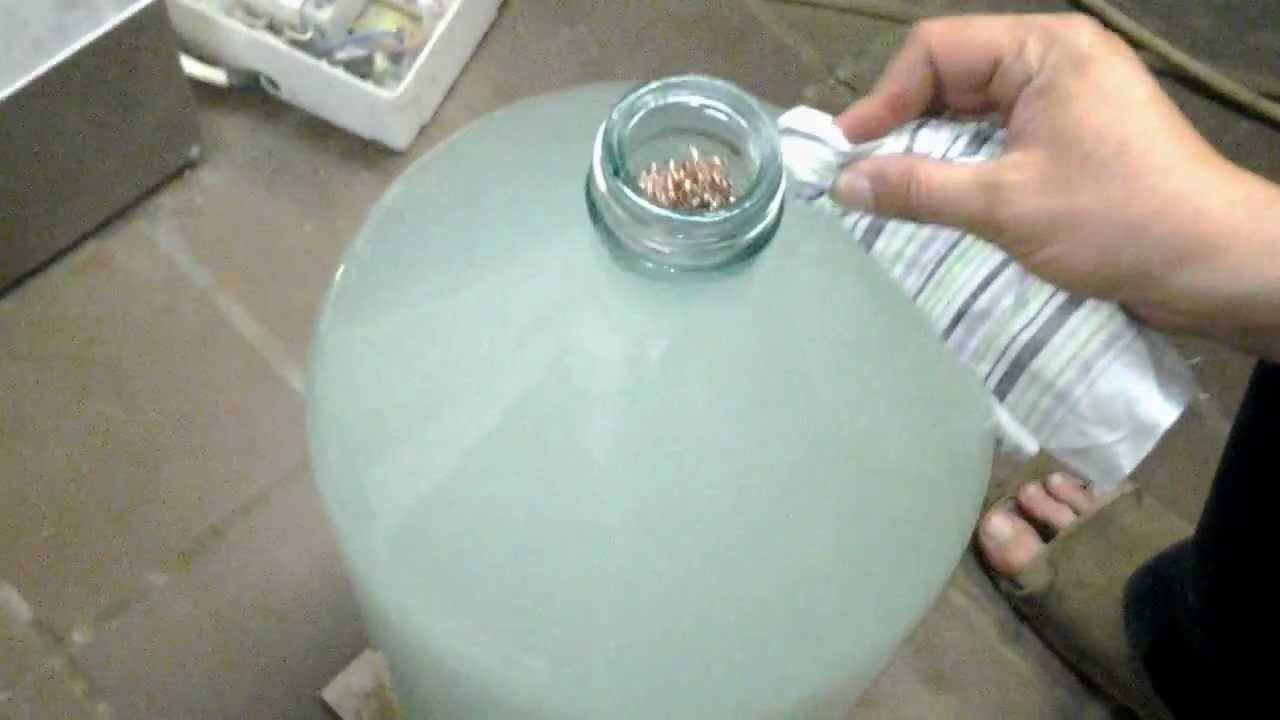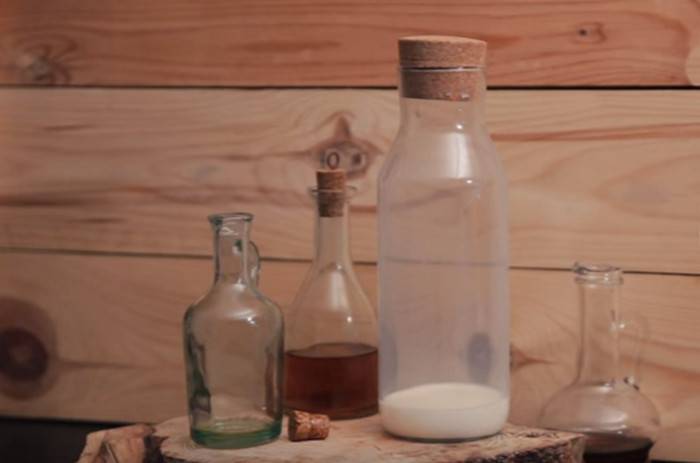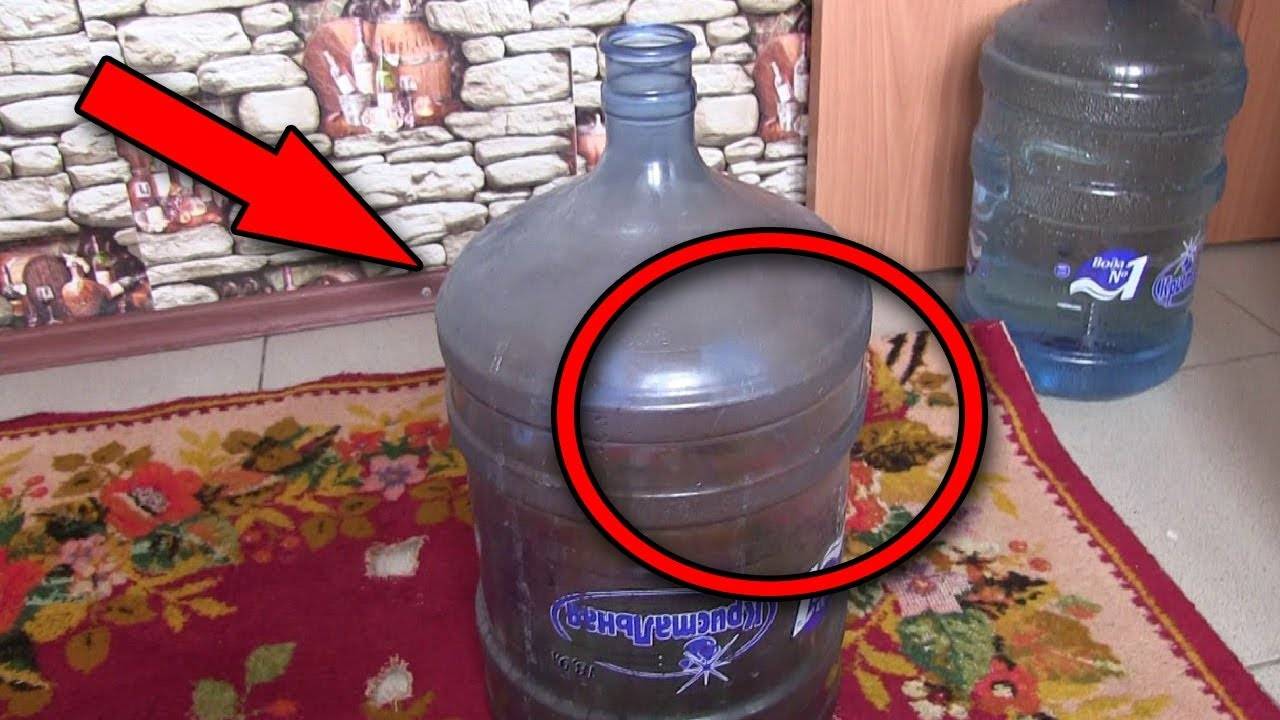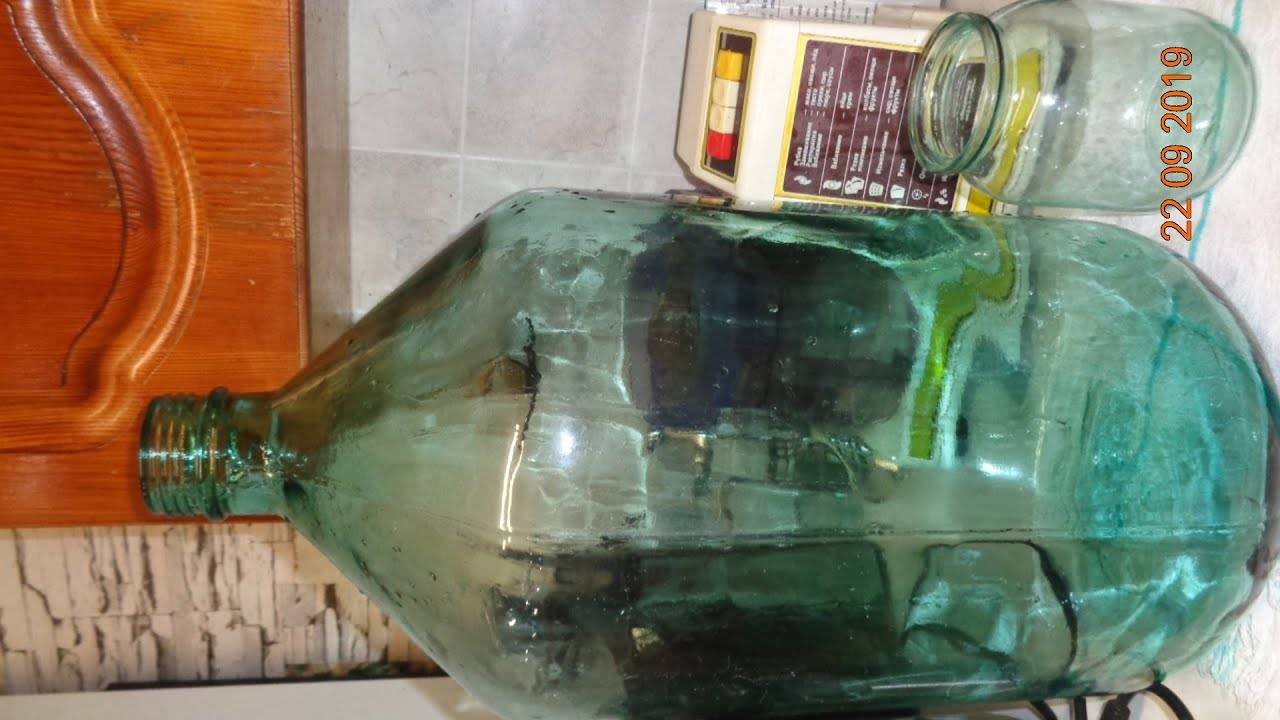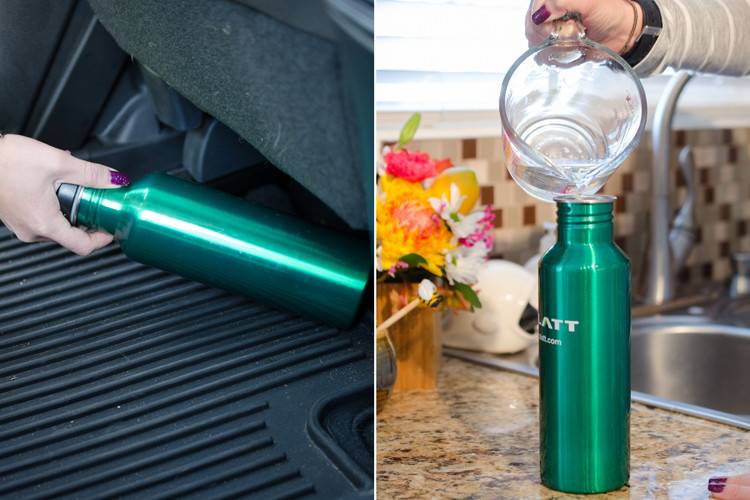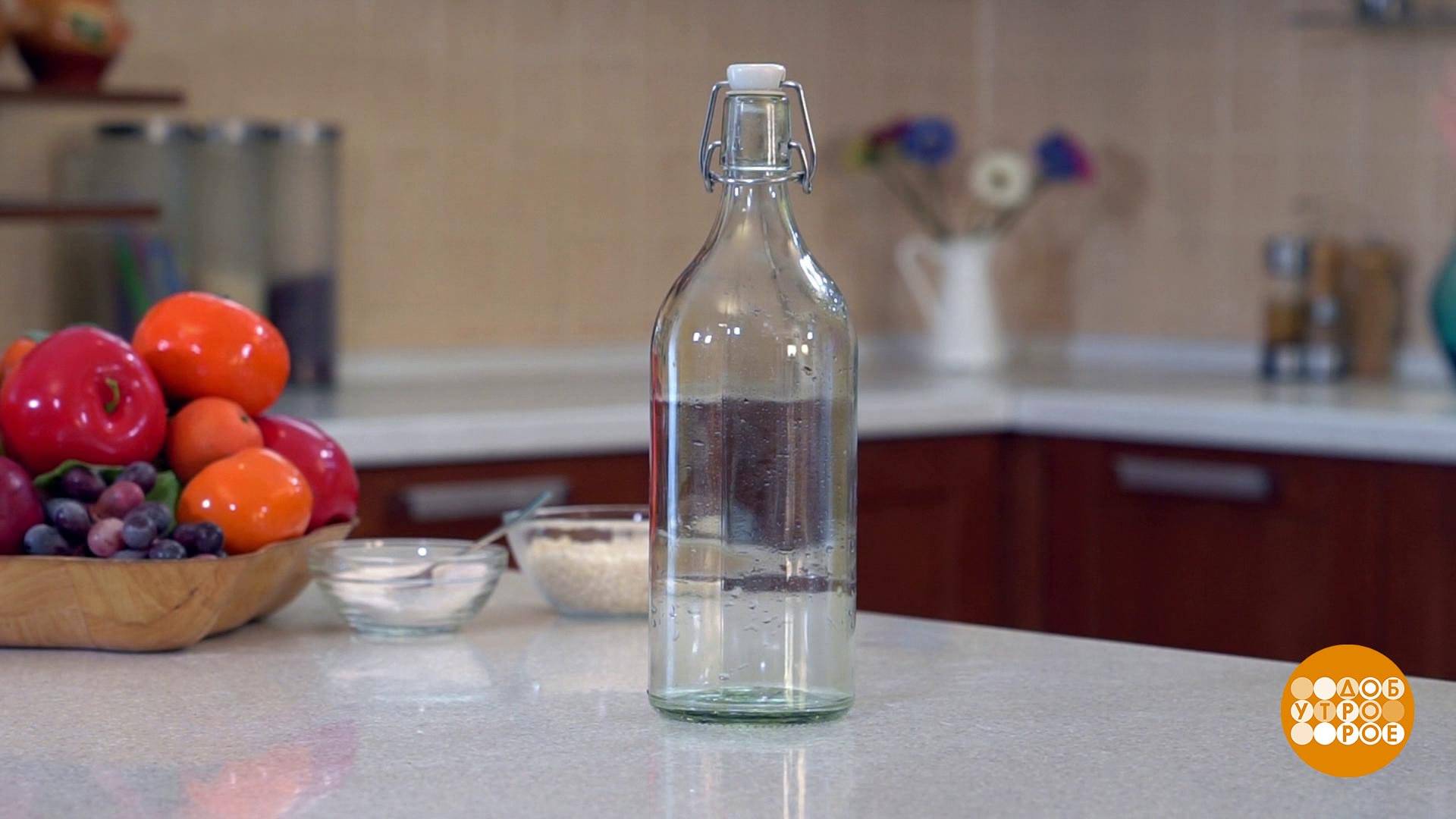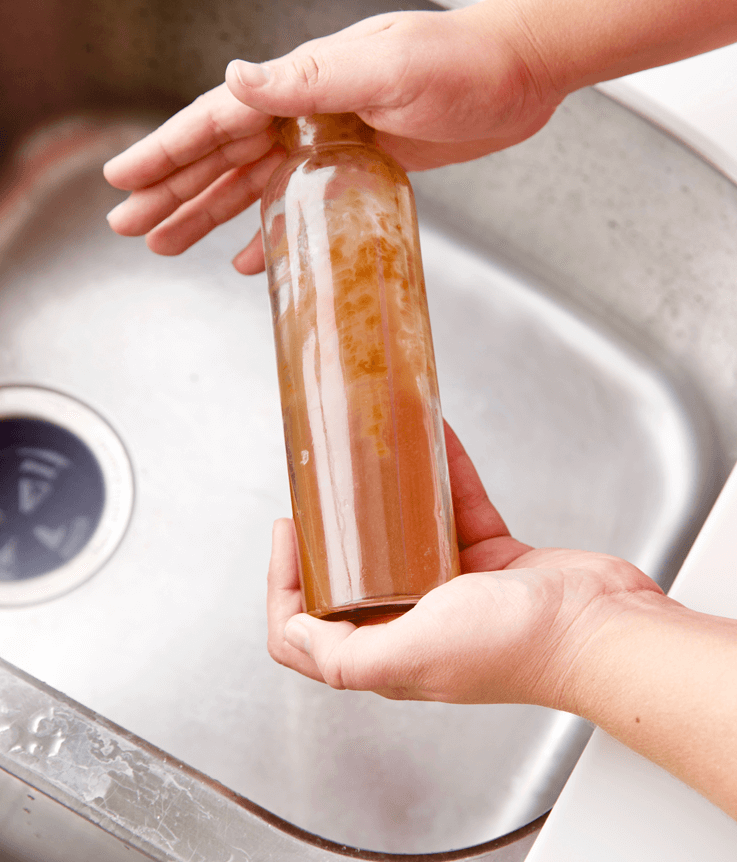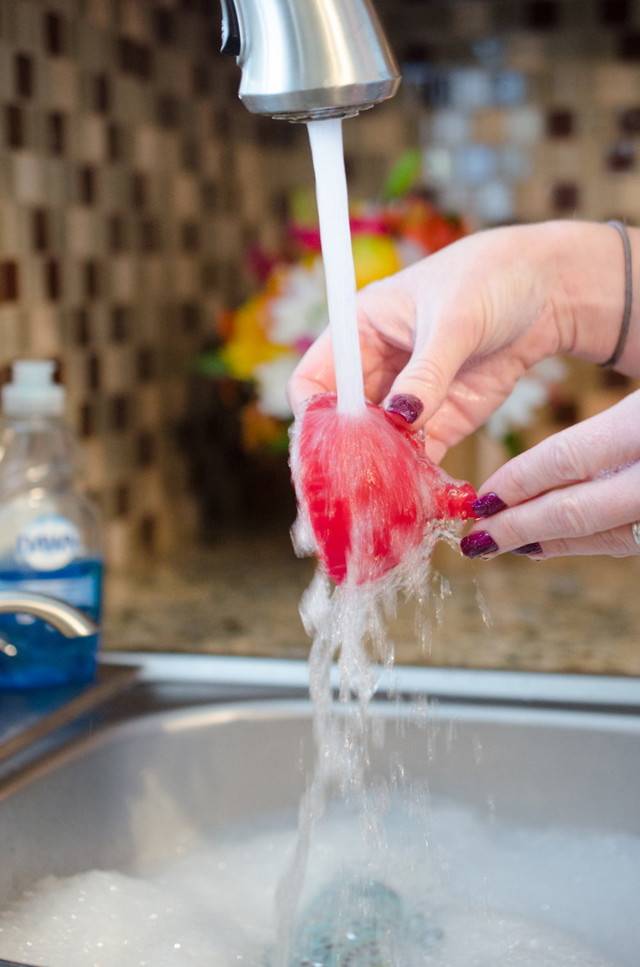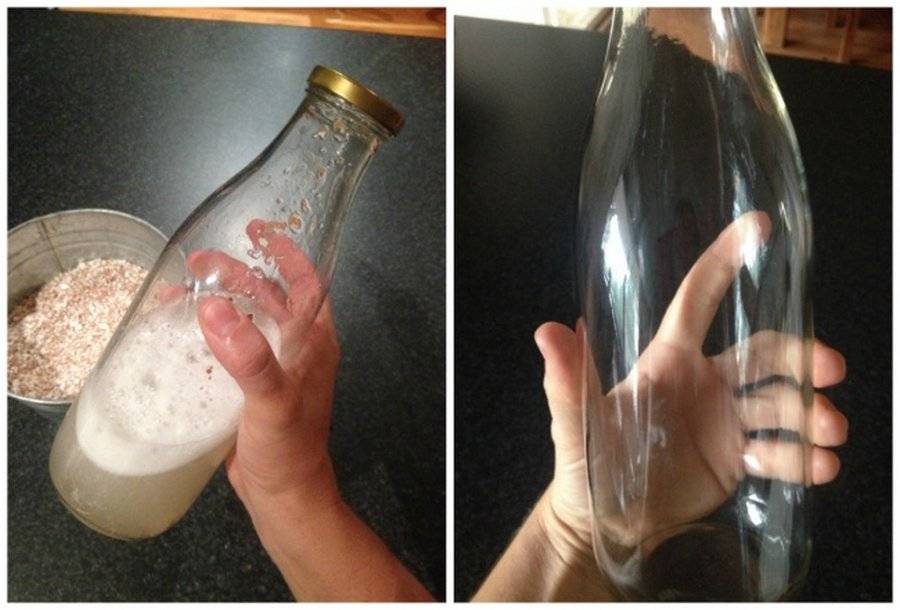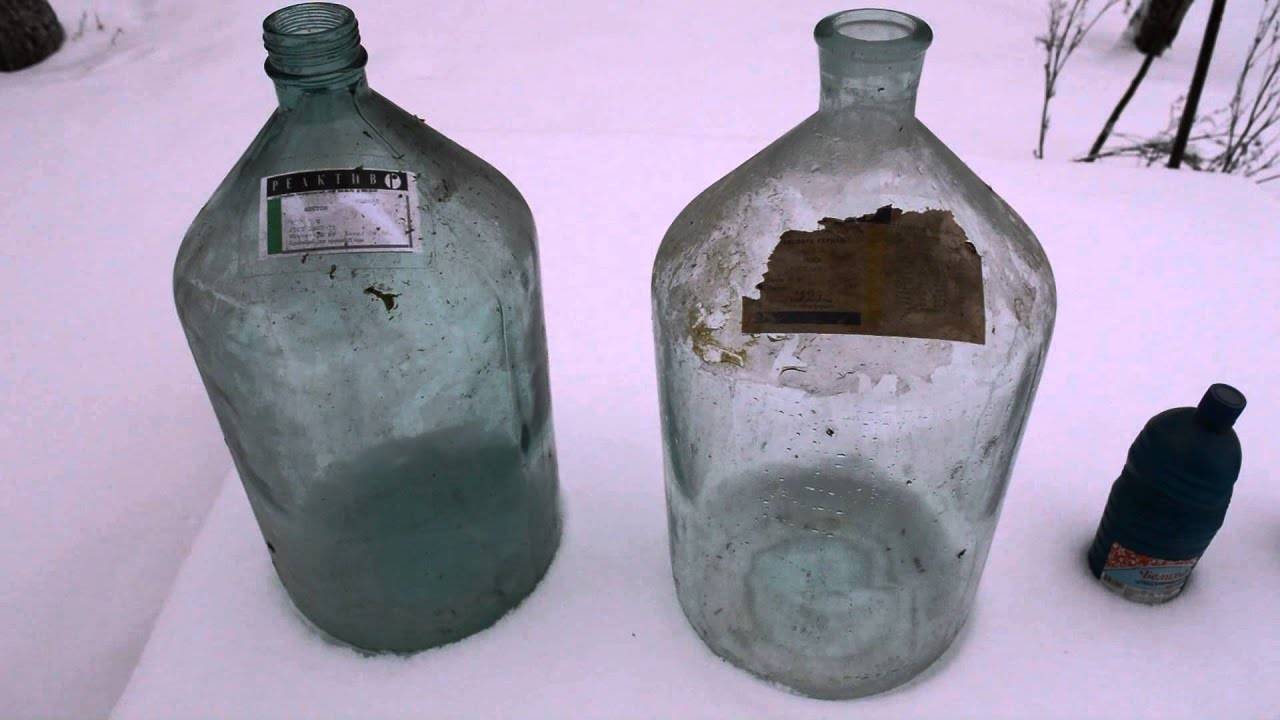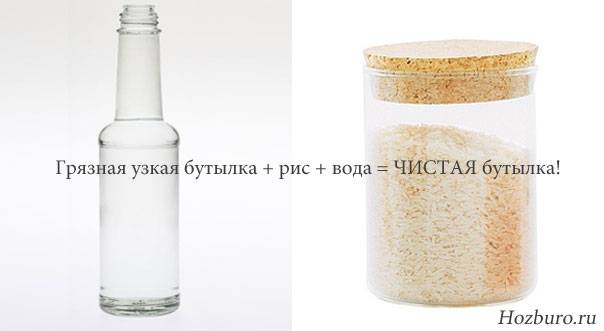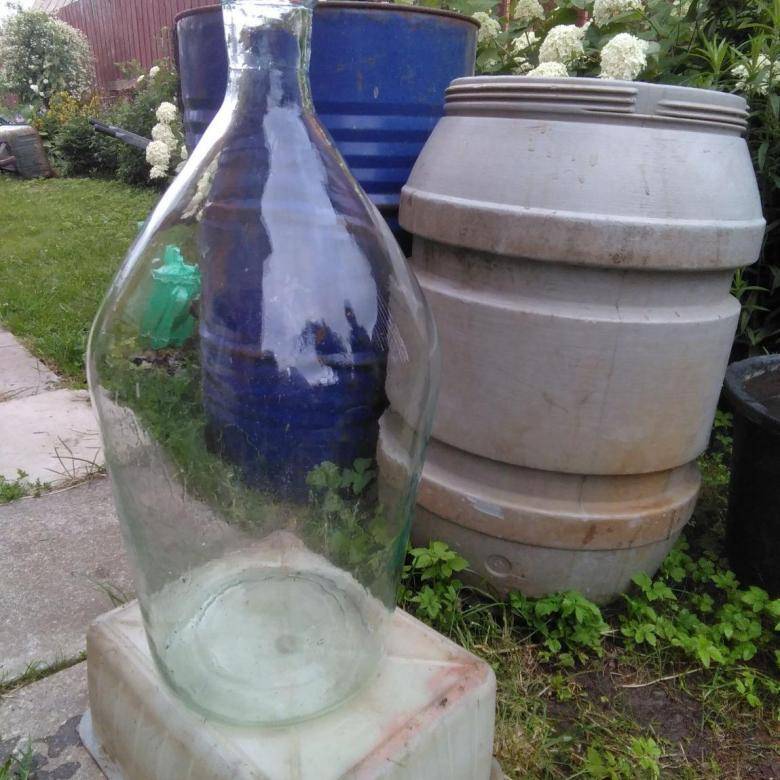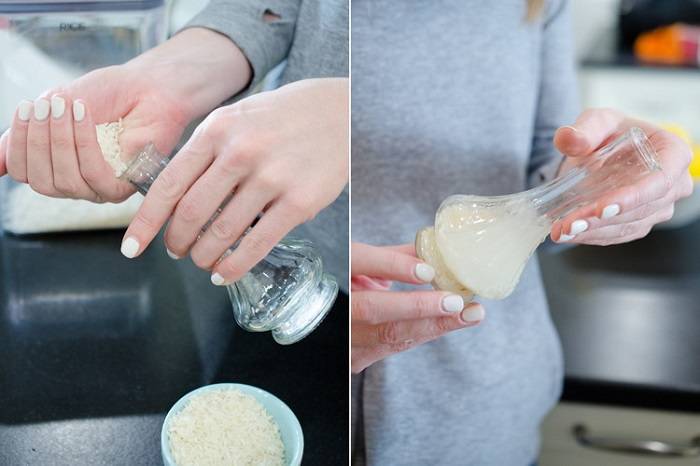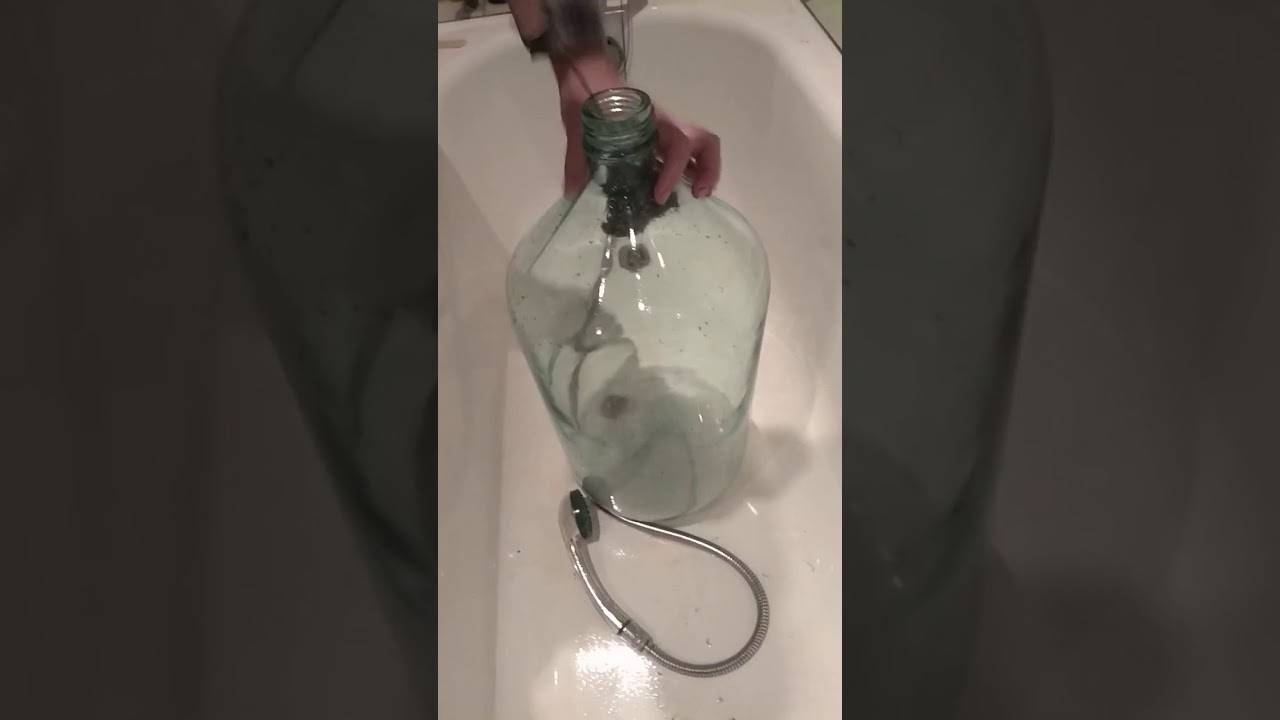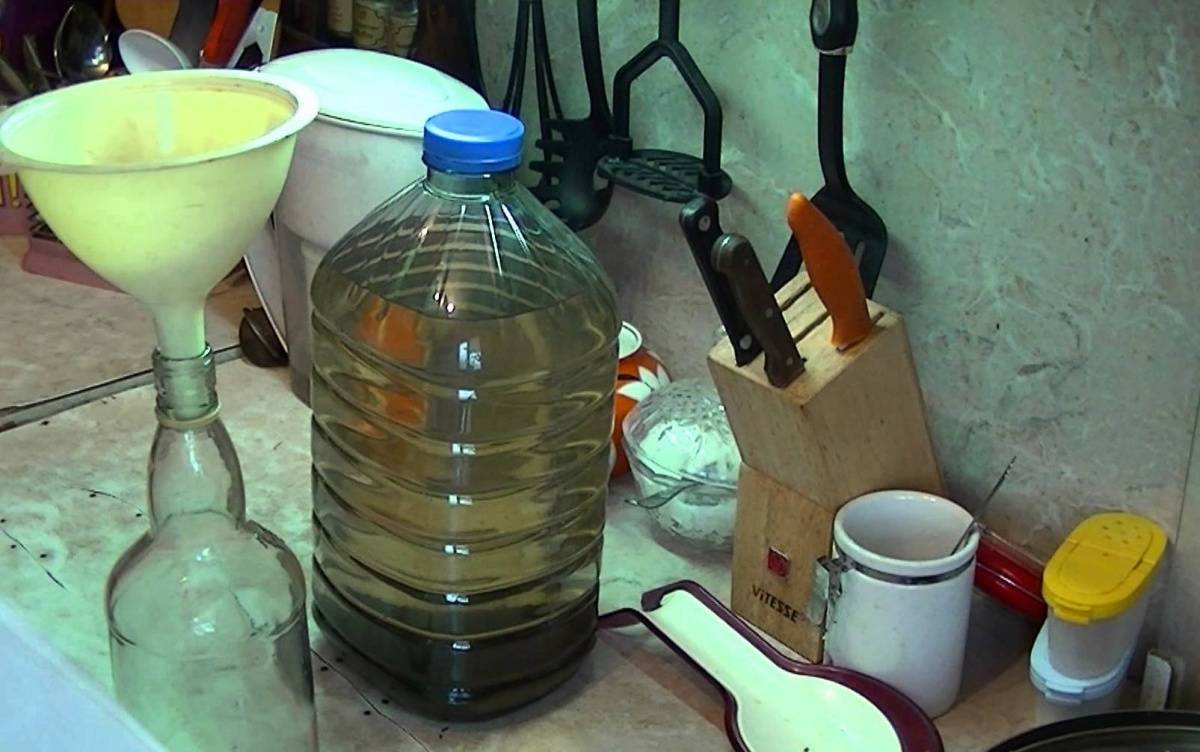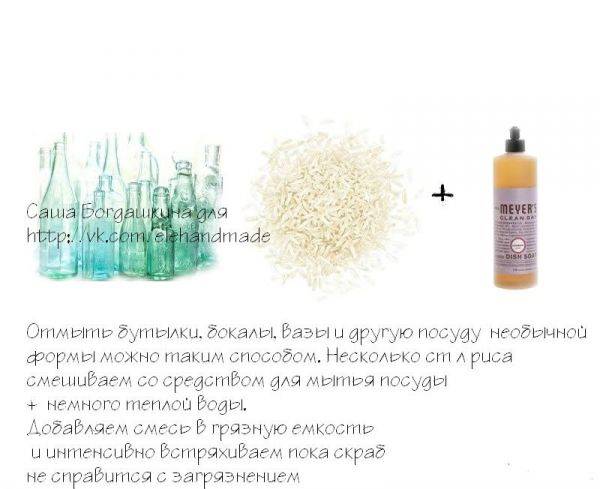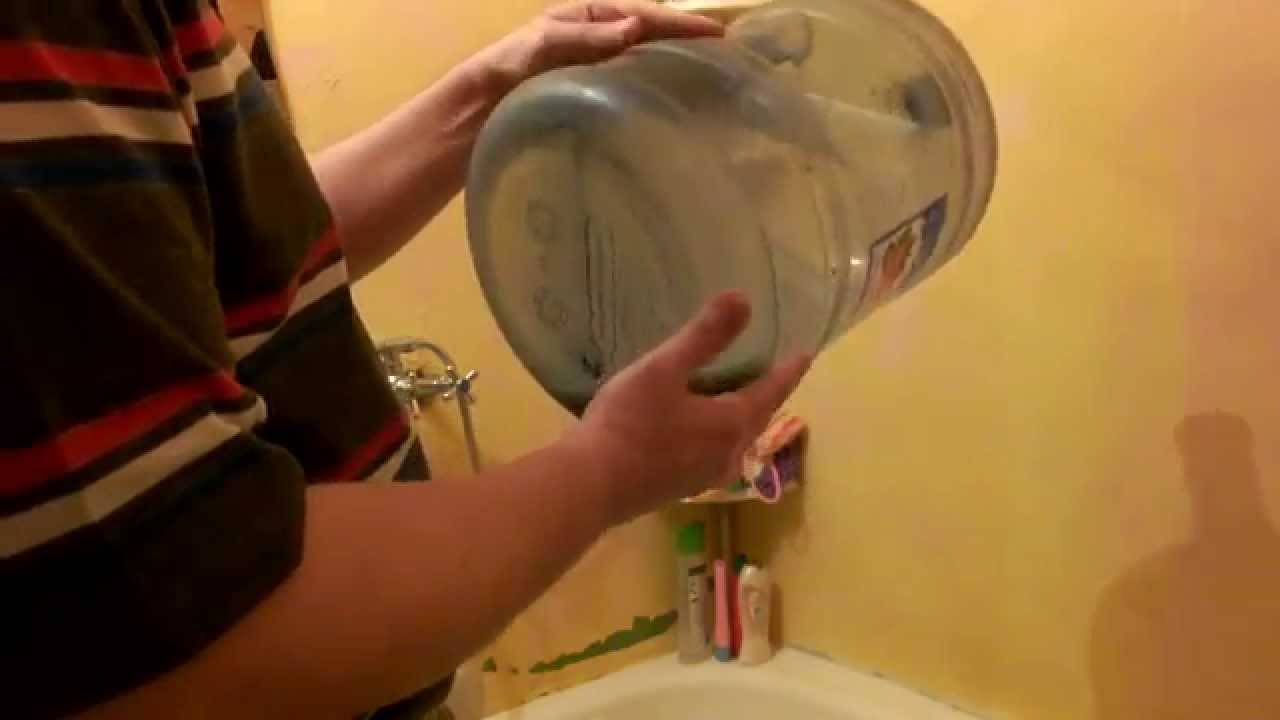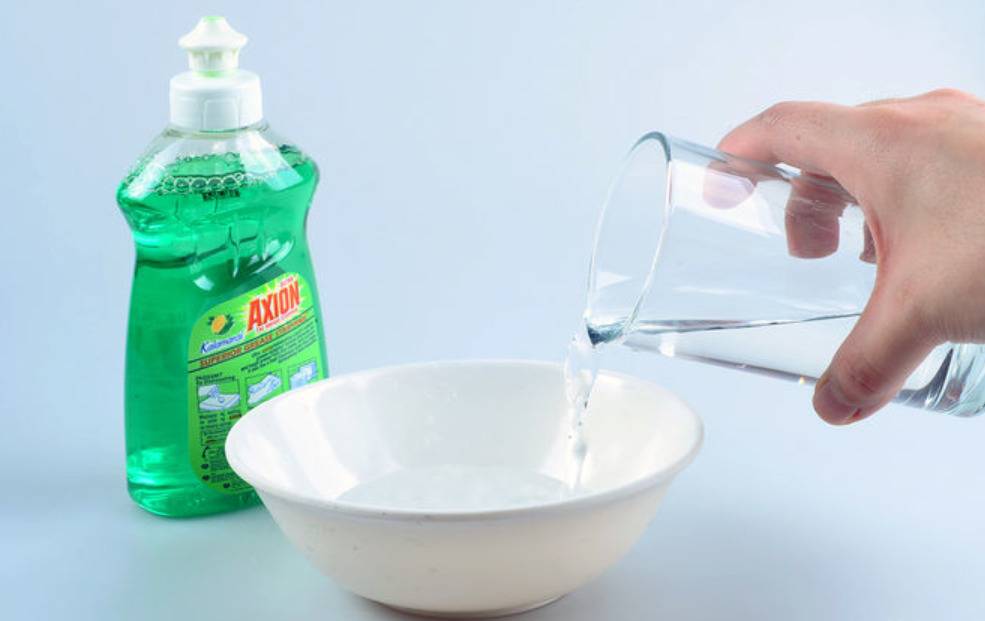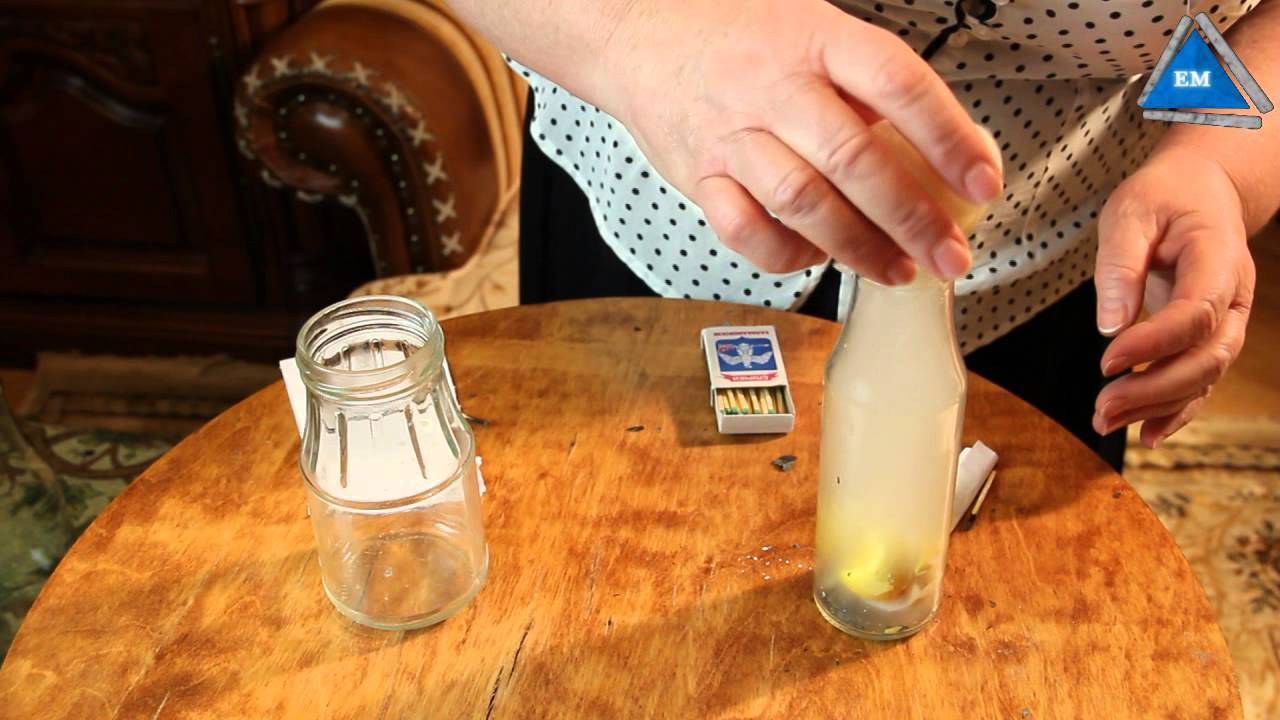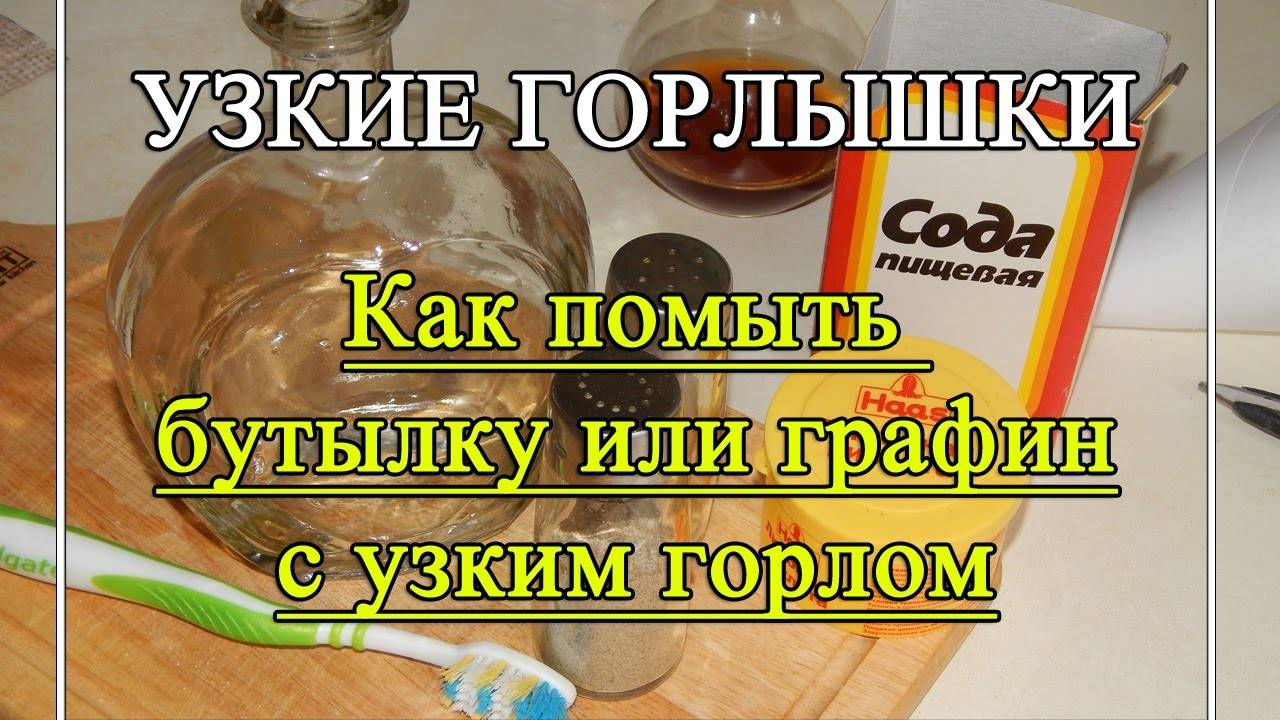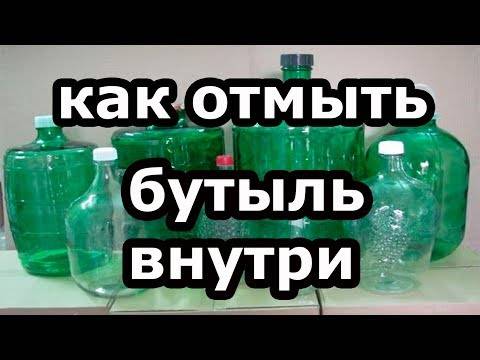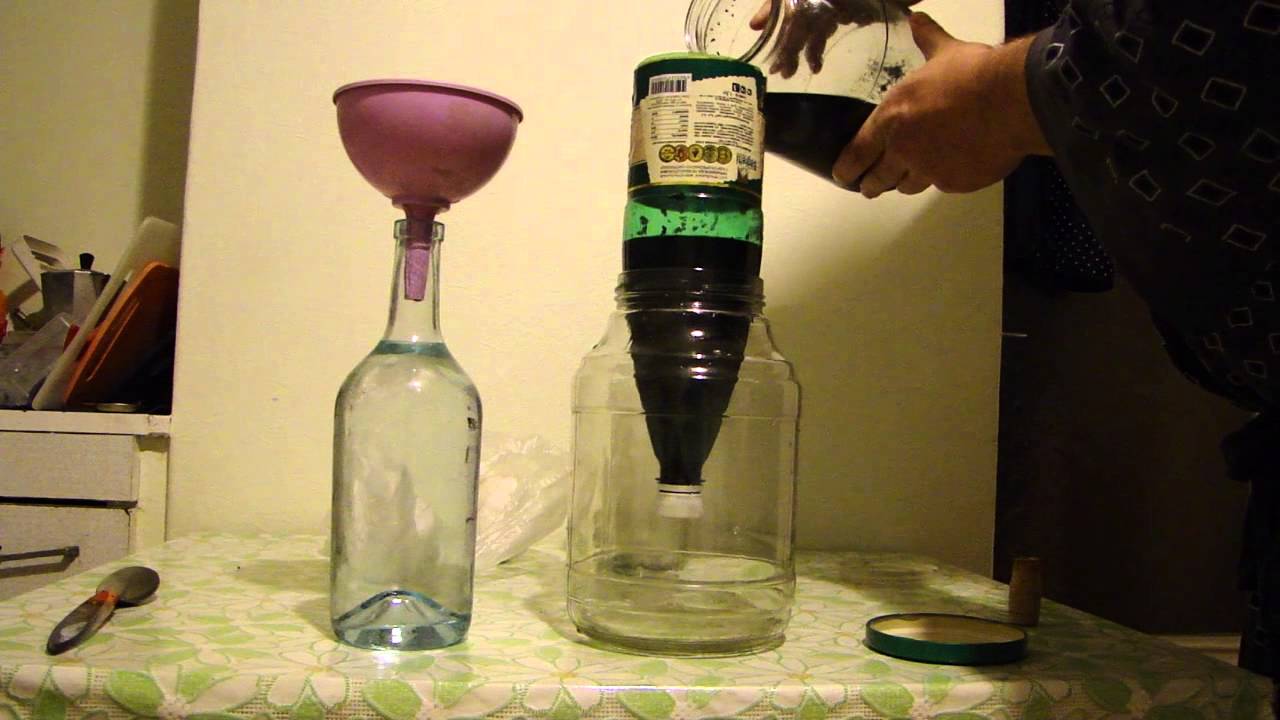Ways, how and with what you can wash the bottle from oil
Until a few decades ago, glass containers were everywhere. Not only vegetable oil was sold in glass bottles, but also all kinds of drinks. You could get money for the delivery of glass containers, and people did not throw out the bottles, but washed them and took them to the collection point.
In those days, there was not such a variety of household chemicals as now, however, our grandmothers managed to wash oil bottles with improvised and cheap means.
Let's consider the most effective ways to return crystal clearness and transparency to containers.
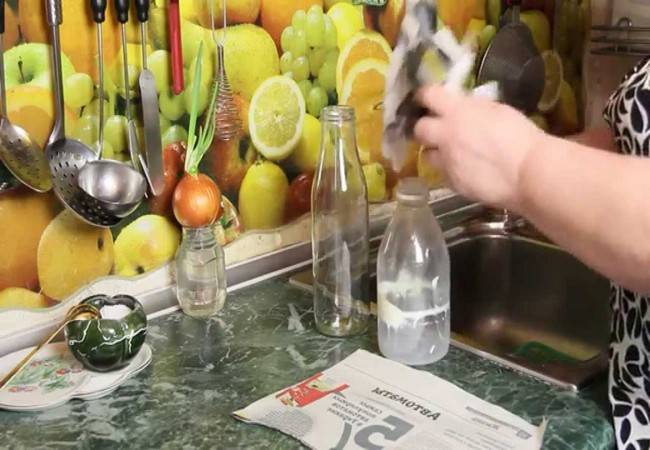
On a note! Regardless of the method you choose, you will need a brush. Without it, it will be extremely difficult to clean the inside of the bottle, because you cannot stick a napkin or sponge into the narrow neck. You can buy a bottle brush at any hardware store.
Soda
Baking soda is a versatile household product. With its help, it will be easy to clean many of the dirt on the kitchen utensils.
To clean the oil bottle, dilute the baking soda in hot (about 90ºC) water at the rate of 2 tbsp. l. per liter of water. Pour the solution into a container. The volume of the soda solution should be enough so that the container is filled almost under the neck. Leave the bottle to soak for a few hours, maybe even the whole day.
After the time has passed, shake the container well and pour out the contents. Most of the contamination should be removed. To remove residues, it is enough to lightly clean the bottle with a brush and dishwashing gel. The glass will remain perfectly clean.
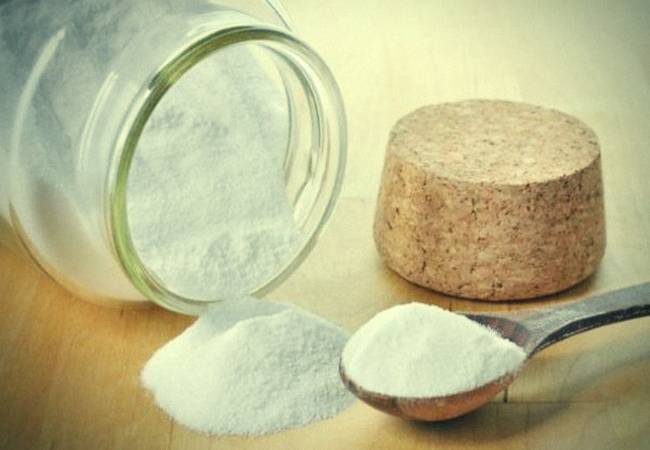
Advice! If the container is contaminated not only from the inside, but also from the outside, dilute the soda in the same way in a container that contains a bottle. First fill the bottle with the solution, then immerse it in the same solution.
Mustard
Mustard powder is another option for cleaning the bottle of vegetable oil. For 1 liter of hot water, take 2 tbsp. l. dry mustard with a slide. The mixture is poured into a container, corked and shaken for 10-15 minutes. During this time, the mustard should eat away the oil adhering to the glass walls.
You can, without pouring the mustard solution from the bottle, rub it inside with a brush. After the performed manipulations, the water is drained. If dirt remains, repeat the procedure.
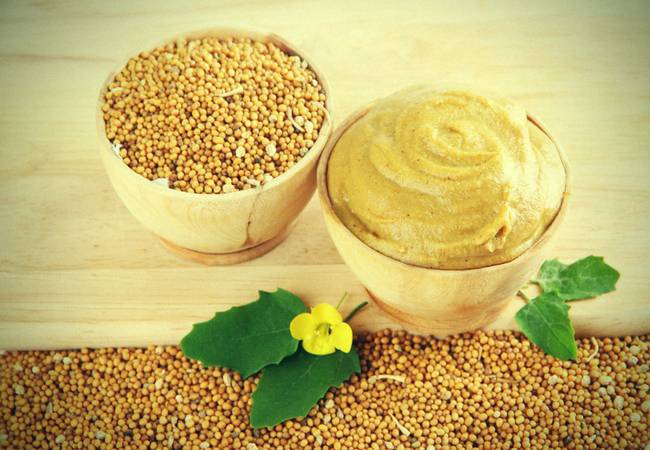
Vinegar
Vinegar is excellent for dissolving fat. To clear the container of oil, dilute 3 tbsp. Of water in a liter of warm water. l. acetic acid 9%. Pour the acid inside, close the bottle and let it stand for 3-4 hours. It is advisable to shake the container periodically.
After the indicated time, drain the vinegar solution and bring the container to ideal cleanliness with the help of detergent and a brush.
Vinegar can be substituted for powdered citric acid. For 1 liter of water, 1 full tbsp is enough. tablespoons of powder.
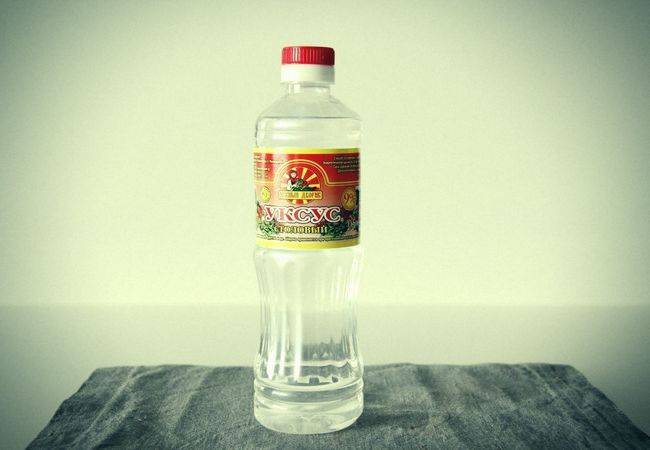
Flour
Quite an original way of cleaning, not for the lazy. If there is oil in the bottle, drain it. Pour flour inside (a couple of tablespoons per 0.5 liter bottle). Twist the container well so that the flour is evenly distributed along the walls. Leave the container for 15 minutes. Then, pour in 2 tbsp. l. rice or buckwheat. Shake the bottle thoroughly for about 5 minutes. Then pour some water inside and add a couple of drops of dishwashing gel. Close the neck and shake the container again for 5-10 minutes. Drain all contents and rinse the glass under clean water.
Boiling
This method will be useful when you need to wash several bottles of vegetable oil. In order not to mess with each, just boil everything at once.
You will need any large pot or bucket. As a cleaning agent, you can use a finely grated laundry soap or any dishwashing gel.
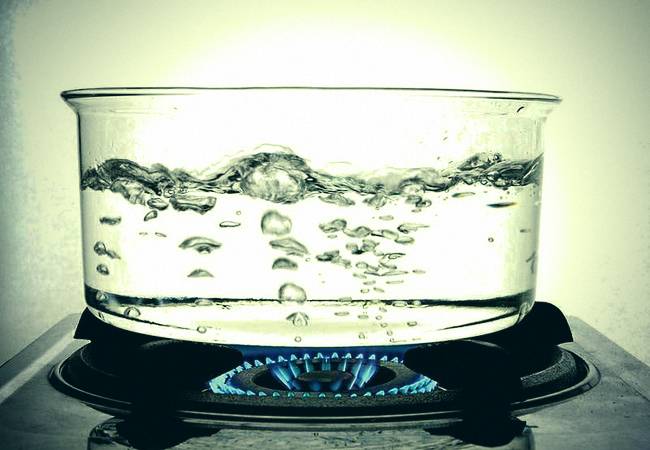
A concentrated soap solution is made in a saucepan and bottles are placed in it so that the liquid is inside.The container is put on a slow fire and the container is boiled for about 20 minutes. Then, when the liquid has cooled, each bottle is treated with a brush and washed under clean water.
How to clean old stains on the bottom of a glass jar using folk methods
We want to start with the method that our ancestors used to use.
Method 1 - sand
Take coarse sand, put it in a bottle and add a little water there. Shake thoroughly. Instead of sand, some use soda with the addition of small pebbles. Both grains of sand and small stones "work" on the principle of a scrub, cleaning the surface of excess particles. Therefore, it does not really matter what exactly you pour into the bottle - they will act in the same way.
Method 2 - cereals
Those housewives who do not have the opportunity to get sand or stones have learned to replace them with more affordable materials. Various cereals are used: rice, buckwheat, pearl barley, etc. or grain. So, pour any tough cereal into a dirty glass container, add a little detergent and pour in water. It remains to shake well, pour out and rinse everything.
Method 3 - newspaper
Take an unwanted newspaper and tear it into many small pieces. Throw them into a bottle, add boiling water there and shake the container vigorously. Let it stand until the water has cooled, and then drain the contents.
Method 4 - potato peelings
Our people do not lose anything, not even potato peelings. There are many ways to use them. We want to suggest another one.
Potato peelings: what are useful and how to use them in the country
Potato peels are not as useless as everyone is used to believe. They can be used as fertilizer. They will also help in the fight against insect pests.
Our grandmothers also used waste from peeling potatoes to wash glass containers. Throw in the cleaning bottle (you can also use finely chopped potatoes), fill in a little warm water and, as in the previous methods, begin to shake the bottle vigorously. Do this until all the dirt is removed.
Method 5 - eggshell
Eggs are a very healthy product. But egg waste - shells - is also a valuable thing. And in the garden, and on the farm, and in the kitchen - everywhere you can find its use. It can also be used to remove stubborn dirt from the bottom of the bottle. So, grind the eggshells and mix them with baking soda. Pour the mixture into a bottle and add a little hot water. Shake the bottle until the bottom is clear.
10 reasons why you shouldn't throw away your eggshells
Unusual ways to use eggshells at home and in the country.
Method 6 - nettle
If you have the opportunity to find fresh nettles, use this plant. After all, a burning weed can be used not only in the country for feeding garden crops. It is also used in other situations: for various diseases, hair problems, in cooking, etc. Nettle will also help solve our problem.
Why nettle is useful, and how to properly use it in the garden and vegetable garden
Are you systematically getting rid of stinging weeds in your garden? Did you know that common nettle has a ton of useful properties?
Chop the nettle, put it in a bottle and fill it with water. Leave it on for 15-20 minutes. Then take the container and shake it well until the bottom is clean. Throw away the contents and rinse the bottle with clean water.
Method 7 - from winemakers
The most "powerful" of all folk methods, which combined both folk methods and options using "chemistry". It will definitely help you if there are stains on the bottom of the bottle from old wine.
Take coarse sand and pour it into the bottle. Add coarsely grated laundry soap to it. If you don't have soap, you can replace it with a little dish soap. Add soda ash (available at your local hardware store).Pour in some hot water and let the mixture sit for a while. Then start shaking or chatting until you clean the container.
How to clean a narrow-necked glass bottle from wine
Most often, such containers have a large volume, so it is quite difficult to wash them due to their non-standard dimensions. In order not to face difficulties during cleaning, follow certain rules:
- fill the bottle with water, so the dirt will lag more easily and it will be easier to clean the surface;
- it is good if you alternate chemical methods with rinsing the inner surface with warm water;
- for the best result, turn the container upside down (if the dimensions allow), so the plaque will disappear under its own weight;
- if the unpleasant odor remains, perhaps it is not the walls that smell, but the bottle cork, try replacing it with a new one;
- do not experiment with large stones as abrasives, as they can break the container.
Oil does not react well with water, therefore, for cleaning, choose substances that dissolve fatty compounds well.
Mustard
For the procedure, you will need mustard powder and warm water.
Procedure:
- Dissolve the mustard in water at the rate of 2 tbsp. tablespoons of powder per 1 liter of liquid.
- Stir the mixture thoroughly so that there are no lumps.
- Pour the substance into a bottle and let sit for 2-3 hours.
- Drain the detergent and rinse the container with running water.
Flour absorbs liquid well, therefore it will perfectly clean the inner walls of the container. You will also need a handful of rice for the procedure.
Progress:
- Fill the bottle with water.
- Add flour to make a white liquid.
- Soak the container by turning it upside down for 1–2 hours.
- Add rice to the mixture.
- Shake well and drain.
- Rinse the container with clean water.
Boiling
If, after use, the bottle emits an unpleasant odor, pay special attention to its destruction, since it will not be possible to destroy it with conventional means. If you don't have time, try to remove the smell with citrus juice.
Freshly squeezed lemon, orange, or grapefruit juice will do. Fill the container with water with diluted juice at the rate of 1 liter of water for 150-200 ml of juice. Let the mixture sit for 8-9 hours, and then wash the container with dishwashing liquid. Repeat the procedure if necessary.
If you don't have time, try removing the smell with citrus juice. Freshly squeezed lemon, orange, or grapefruit juice will do. Fill the container with water with diluted juice at the rate of 1 liter of water for 150-200 ml of juice. Let the mixture sit for 8-9 hours, and then wash the container with dishwashing liquid. Repeat the procedure if necessary.
How to keep the device clean after cleaning?
After the outer part of the cooler is cleaned, you can proceed to removing dirt from the surfaces located inside the device. For this, special solutions are used.
One of the most effective and popular cleaning options is the use of citric acid. It allows you to soften the plaque formed on the walls of the bottle and other components of the unit, disinfect the surface, and eliminate the unpleasant odor. Moreover, this substance is completely safe for the cooler itself.
To prepare the cleaning solution, take citric acid at the rate of 200 g of dry matter per 10 liters of water. The resulting product is poured into the device, after which it is included in the network. After heating, the cooler is turned off and left for 5-6 hours. After the specified time has elapsed, the liquid is completely drained, and the device is rinsed with clean water. The procedure can be repeated if necessary.
A citric acid solution copes well with scale, and also eliminates pathogenic microflora that forms in the device over time
Mode of application:
- The substance is mixed with water, following the instructions.
- After preparation, the solution is immediately poured into the cooler and connected to the network.
- Water is periodically drained through taps into the tank.
- In this mode, with a slight contamination, the device should work for at least a day, if necessary, the duration of cleaning can be increased.
After that, the cleaning liquid is drained, and the cooler itself is thoroughly washed with water until the extraneous taste completely disappears.
Keeping the cooler clean between cleanings is not that difficult:
- Every time you replace the old bottle with a new one, flush the bottle receptacle.
- After removing the protective film from the new bottle, wipe the neck with an alcohol wipe or damp cloth
- Disinfect the device every 1-2 months.
How to clean mechanically
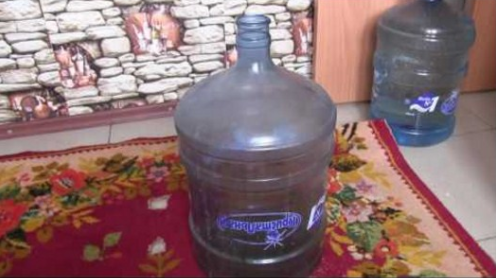
Probably, almost every person in his life at least once washed a container that has a green sediment. But how should cleaning be done correctly without harming your own health?
The most common reason for the appearance of greens in this kind of container is the so-called chlorella alga, which, in principle, is not capable of causing special harm to the body. But everyone wants to store water in a normal container. For this reason, most housewives are wondering how to clean the container from greenery without resorting to the help of harmful agents.
The following simple methods will help to cope with the presence of algae in plastic bottles:
- Perfectly washes any baking soda container available in every home. Pour soda into the bottle and leave it for literally a few hours. In this case, the calculation should be as follows - for every twenty liters, about half a pack will be required. You will need to add a little water to the container. Then you need a clean cloth, after which you need to dangle the bottle for ten minutes. After completing this procedure, rinse the remnants of the product with running water.
- To clean a plastic bottle, you can use a regular chain, which should be thrown into a container and poured into it. Then shake the container and rinse.
- We wash the deposits on the container with ordinary millet, while the amount is calculated as half a kilogram per twenty-five liters. It should be poured into a container and filled with water, after which it must be shaken for ten minutes. You can also use liquid soap to clean the bottles.
- The folk method also includes the use of ordinary newspapers, which should be torn and crumpled beforehand. After this is done, the lumps must be placed in the neck and filled with clean water. Then you should shake the bottle and turn it for five minutes.
The methods listed above, as a rule, allow you to immediately clean the plastic bottles, but if the hostess is alarmed by these manipulations, then you can use herbs.
Important points of the process
Cleaning the container from wine will go faster and will not cause much trouble if you adhere to the following rules:
- Initially, the product must be soaked in warm water. If there is such an opportunity, then it is better not just to fill the bottle, but to put it in warm water, then the sediment will lag behind faster.
- After each cleaning option (if it does not give an ideal result), the item must be dried before repeating the approach or trying something new. The alternation of chemical action using clean water and dry air will destroy even the most persistent sediment.
- Trying to remove the plaque located from the inside of the bottle, you cannot neglect the law of universal gravitation. If you turn the bottle over so that the problem area is on top, it will gradually crumble under its own weight. However, given the size of the object, this is not so easy to do.
Although the glass used in wine bottles is very thick, it is not difficult to break. In the process of cleaning, do not use coarse sand, pebbles, small stones.They are really effective at breaking up dense sediment, but they can leave scratches on the inner surface of the product, which in the future will lead to a decrease in the strength of the material.
If the bottle has not been cleaned for so long that its inner surfaces are covered with mold, then cleaning agents alone will not be possible. We'll have to connect disinfectants or professional sterilization methods.
What is needed
A number of tools are required for quick, safe and effective cleaning.
Several rugs
The rugs come in handy for storing collapsible parts. In this case, not a single part will be lost, and the structure will be assembled correctly.
Cotton pads and gauze balls
It is convenient to take care of the mouse with gauze balls or cotton pads. They are impregnated with an alcohol solution and the surface is wiped.
Wet wipes
Special wet wipes based on alcohol will help you take good care of the mouse body. Common wet wipes contain chemical components that can harm equipment:
- Miraclean viscose-based universal wet wipes are suitable for cleaning the entire surface of the computer. The composition has antistatic properties. It has a pleasant smell.
- Wet wipes BURO BU-Zsurface made of non-woven fabric. They are based on viscose and polyesters. Impregnation of napkins protects the surface from dirt for a long time, as it has an antistatic property.
Napkins must have a smooth, soft texture. There should be no long hairs.
Special liquids
Computer cleaners can quickly remove dirt. Most solutions contain components that not only clean, but also disinfect the surface:
- Defender CLN gently cleans the surface without damaging it. The composition contains no abrasive components.
- Spray ProfiLine Screen Clean helps to keep office equipment clean. The product is sprayed onto a dirty surface, and then wiped off with a napkin. The tool easily copes with greasy stains, old marks and stains.
Ethyl alcohol or alcohol solution "Chlorhexidine"
For better cleaning of the surface of the mouse and for its disinfection, ethyl alcohol is used. Chlorhexidine solution has a more gentle effect. A small amount of the solution is applied to a napkin and the surface is wiped.
crosshead screwdriver
If a lot of dirt has accumulated and you need to disassemble the device, you cannot do without a Phillips screwdriver. Using a screwdriver, it is easy to open the upper part of the manipulator.
Small plastic scraper
It takes a lot of effort to remove dried, perennial dirt. A plastic scraper comes to the rescue. Its dimensions are small, so dirt of any complexity can be easily removed with its help.
Soft dry wipes
After all procedures, you need to wipe the device dry. It is best to use special soft dry wipes.
Lens or magnifying glass
Use a magnifying glass or magnifying glass to achieve maximum cleanliness. With the help of these objects, it will be possible to see all the particles of dirt.
Cleaning the canister from green plaque using folk methods
How to clean a plastic (or any other) canister from deposits, greenery and mold on the inner walls? If the container is not cleaned for a long time or water remains in it for a long time, sediment may remain at the bottom, a green coating may appear on the walls, and mold around the neck. To get rid of them, you need to thoroughly clean and disinfect the canister. The following instructions are suitable for cleaning both plastic canisters and containers of other materials.
Expert opinion
Evgeniya Taran
It is best to clean it regularly and not when the bottom turns black. At such a moment, it is better to buy a new canister, which is not a significant investment. But let's take a look at the different cleaning methods.

For barrels, cleaning is simple.Their holes are so large that both hands can be used for cleaning. Detergents, absorbents, cleaning powders with water or other suitable agents are allowed (usually the cleaning possibilities are indicated on the label affixed to the product itself or on the box). Of course, as with canisters, regular washing and cleaning is recommended to prevent dirt from getting trapped inside the barrel.
Regular canister cleaning with regular use:
- After pouring out the remaining liquid, pour some dishwashing gel into the container, fill with moderately hot water.
- Wait for the product to absorb dirt and possible deposits, then shake thoroughly.
- Pour out the water and detergent, rinse the canister several times with clean water to remove any soap residue.
- Leave the container to dry completely by placing it upside down (ideally positioning it so that air can flow through the neck).
How to clean a bottle of oil with vinegar
Vinegar will help not only wash out the oily residues of the oil. It is also suitable for thorough disinfection, even without the need for a brush
Caution: Do not use this method when cleaning stainless steel items!
- Pour 1 tbsp into the canister. white vinegar, add mildly hot water, shake vigorously.
- Leave the solution to act overnight.
- In the morning, pour out the solution, rinse with clean water, leave to dry.

Cleaning the canister from gasoline or oil with vinegar and rice:
- Pour hot water into a container, add ¼ tbsp. white vinegar.
- Add some dry rice, cover, shake.
- After cleaning, rinse thoroughly and leave to dry.
Mustard peel
Mustard has long been used for washing dishes. And even now, in the era of a wide range of household chemicals and mass advertising, many wise housewives use this powder. Mustard can not only cleanse dirt, eliminate grease. She does this without harm to her health.
Mustard will help get rid of green plaque, it will perfectly disinfect the canister. It reliably kills all microbes while at the same time forming an invisible protective film that prevents microorganisms from growing on the treated surface.
Mustard peel:
- Pour into the container about ¼ tbsp. mustard, cover with hot water. Mix thoroughly, shake well.
- In case of stubborn dirt, you can speed up the removal of plaque with a bottle brush. When cleaning glass bottles, skip this step, otherwise the glass may break.
- Leave the solution to act overnight.
- In the morning, rinse thoroughly with clean water, leave to dry.
Flour
You can clean the inside of the canister with flour.
Cleaning process:
- Pour flour into a container (4 tablespoons per liter canister).
- Shake it to spread over the walls.
- Leave it on for 10 minutes.
- Empty it out.
- Pour rice inside, shake (to remove flour residues).
- Repeat if necessary.
Boiling
Fill a bottle with hot water, add detergent and wash with a brush. That's all. But what's the secret? What temperature is enough to kill microorganisms, wash away unsightly and harmful green plaque?
Thermal destruction of microorganisms shows high efficiency against bacteria, viruses and protozoa, often present in green plaque. To do this, use the pasteurization temperature (70 ° C) or boil under normal conditions (not for plastic!). Most bacteria die at temperatures around 60 ° C. At a temperature of about 65 ° C, pathogens are destroyed after a minute of exposure.
Removing bad odor from the bottle
Are you worried about the bad smell from the bottle? There is a simple physical-chemical-biological explanation for this: water + warm environment + a certain time = an army of microbes.
Do you think that the absence of plaque is a guarantee that you are drinking clean water? Unfortunately, even clean water can be home to millions of unwanted microbes.With regular use of a drinking water bottle, bacteria from the mouth enter it. Their proliferation in the container leads to the appearance of an undesirable odor. This phenomenon cannot be avoided - there is a certain amount of bacteria in the mouth of each person.

Therefore, it is important not just to wash the bottle. It must be cleaned to remove harmful microorganisms.
There are several ways to do this.
Option number 1:
- Crush the eggshells into larger pieces.
- Put them in a bottle, add some dish gel and water.
- Shake it up.
- Empty contents, rinse with clean water.
Option number 2:
- Wash bottle with soapy water before cleaning.
- In a bowl, combine half a packet of baking powder and lemon juice.
- Apply the mixture to a bottle brush, scrub the entire inside of the container.
- Leave it on for 10 minutes and then wash it off.
Option number 3:
- This method will help flush various mineral deposits from the canister walls.
- Use antacid tablets or denture cleaning tablets.
- Fill a container with water, place 1-2 tablets in it.
- Leave the tablet to dissolve, rinse the container, leave to dry.
Option number 4:
- Prepare some coffee grounds and dilute with warm water.
- Pour the mixture into a bottle, shake well.
- After a few minutes, pour out the solution, rinse the container, and leave to dry.
Option number 5:
- Pour ¼ tbsp into the container. salt, pour warm water.
- Close, shake, leave for 1-2 days.
- Rinse, leave to dry.
To keep the canister clean, it is recommended that you take proper disinfection time every 7-14 days. This can be done using simple ingredients found in every home.
How to remove a label
To put the bottles in order, you must first wash off the labels on the glass. This is best done using specialized household chemicals. Let's list the most effective store products:
- Promega label. The cost of the spray is about six hundred rubles. Active foam qualitatively dissolves any adhesives, leaving a pleasant smell.
- The price of the cleaning liquid is more budgetary - only one hundred rubles. At the same time, it quickly removes labels not only from glass, but also from ceramic and plastic surfaces.
- LABEL OFF. The spray allows you to quickly wash glue, tape and labels from any coatings. The cost of the product ranges from four hundred to five hundred rubles.
- REMOVER OF KUDO STICKERS AND ADHESIVE TRACKS. The gel-like composition has a pleasant aroma. At the same time, it easily dissolves glue residues. The price of the tool ranges from two hundred to three hundred rubles.
The listed store products are quite effective. However, before using them, you should carefully read the instructions for use.
If you do not want to use household chemicals, you can simply substitute the bottle under a stream of hot water. Under the influence of boiling water, the glue will quickly soften, and it will not be difficult to wash the label.
How to disinfect a large bottle
For long-term storage of wine or beer, bottles must be sterilized before stopping. If the containers are small, just hold them over steam or bake them in the oven. If the bottle is large, try one of the following:
- pour boiling water over the inner walls;
- order a specialized steam cleaning;
- buy a disinfectant (pyrosulfite or metabiflfite), according to the instructions, dilute the drug in water and rinse the containers.
Please note that cork and other utensils that will come into contact with future wine also need sterilization. You can clean the surface of the bottle from plaque and dirt in several ways using household chemicals or improvised substances
When choosing the appropriate method, consider what material the container is made of. In addition, choose those ingredients that will definitely not spoil the inner surface of the container.
You can clean the surface of the bottle from plaque and dirt in several ways using household chemicals or improvised substances. When choosing the appropriate method, consider what material the container is made of. In addition, choose those ingredients that will definitely not spoil the inner surface of the container.
The simplest way to clean inside narrow-necked bottles, which will save you a lot of time, nerves and energy.
Almost every family has bottles with various contents, for example, syrup, natural milk, vinegar and others, which in the future may well still serve for the benefit of society. The catch is that washing a bottle with a narrow neck from the inside is an extremely difficult and time-consuming task. What can I say, even if dishwashers do not fully cope with this task. However, bartenders, due to their duty, come across this quite often, so they came up with a fairly simple and effective way.
Content, fast transition
How to clean a cooler bottle at home?
It is important to understand that you need to clean not only the bottle, but also all parts of the cooler that come into contact with water. How to clean a water cooler, read this article completely.
If only the water container needs washing, you can wash it with:
- citric acid;
- soda;
- vinegar;
- salt with gel for dishes.
Now we'll show you how to handle water cooler containers, but first make sure you have everything you need on hand - hot water, dishwashing liquid, baking soda, and raw rice. Let's move on to what to do and in what sequence:
The next step requires extra care, because as a result of further actions, the pressure inside the bottle will begin to increase and it can accidentally explode if you overdo it. To get started, close the bottle with a lid and shake the container gently.
Turn on hot water and rinse the container thoroughly
In the presence of solid deposits or dried mold, the bottle should be left for 15-20 minutes, having previously filled it with warm water and a small amount of washing liquid. After that, the water must be drained and the plastic container must be thoroughly rinsed again.
Now take a third of a glass of baking soda (removes the smell) and the same amount of raw rice (removes the stuck on plaque), add a spoonful of detergent and fill it all with hot water. It is enough to fill the plastic container about halfway.
With care, hold the lid and slowly start unscrewing it while holding the bottle over the sink. Empty the container and rinse it again with hot water. Make sure that there is no detergent left inside the bottle and only then can you complete the cleaning procedure.
So, now you know how to clean a water cooler bottle, which means you can do it yourself and contribute to the preservation of the environment. And most importantly, you will be able to reuse the processed container without any health risk. And remember that bottled glacier water, like any other water in plastic containers, is the best choice for thirst quenching and cooking.

